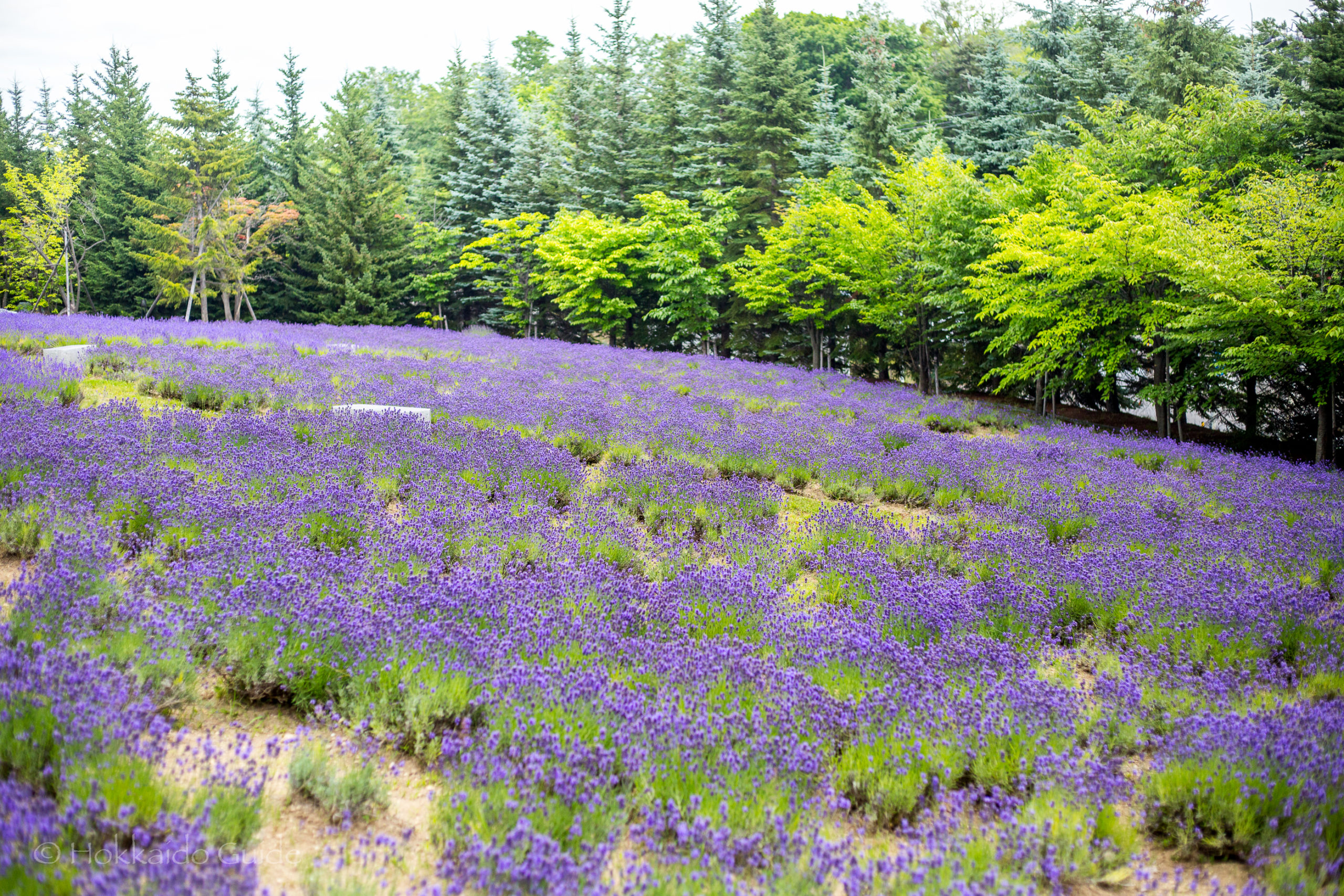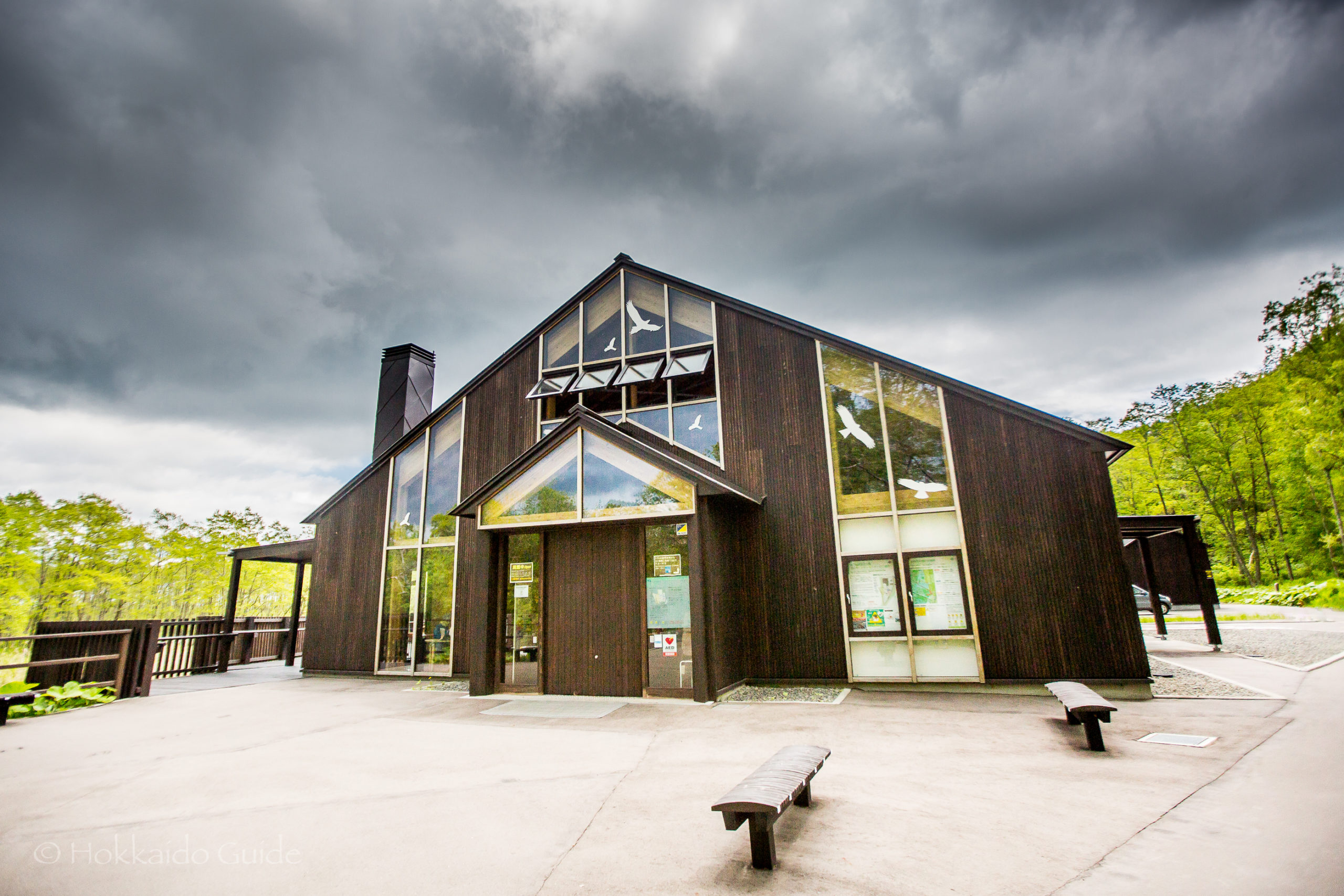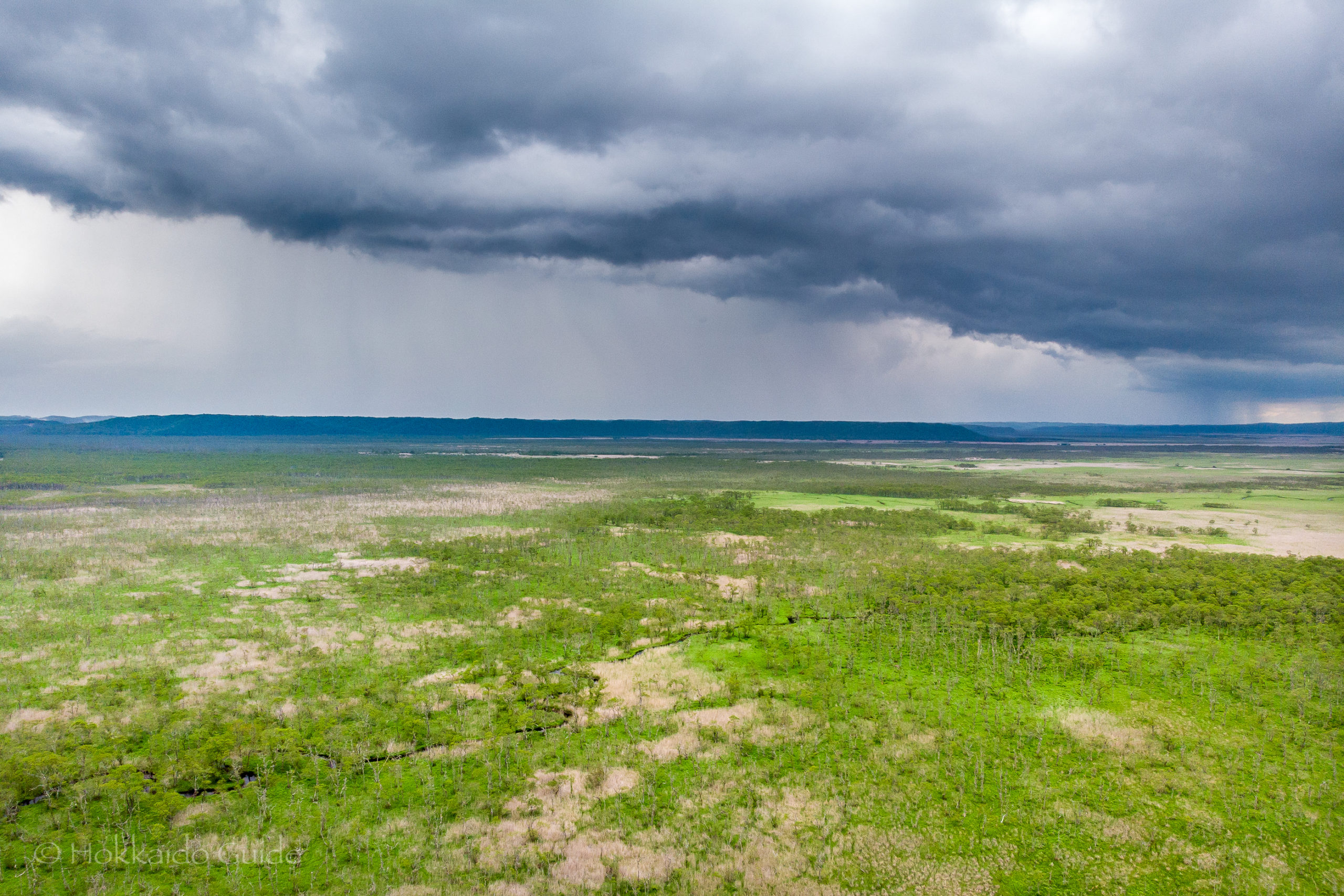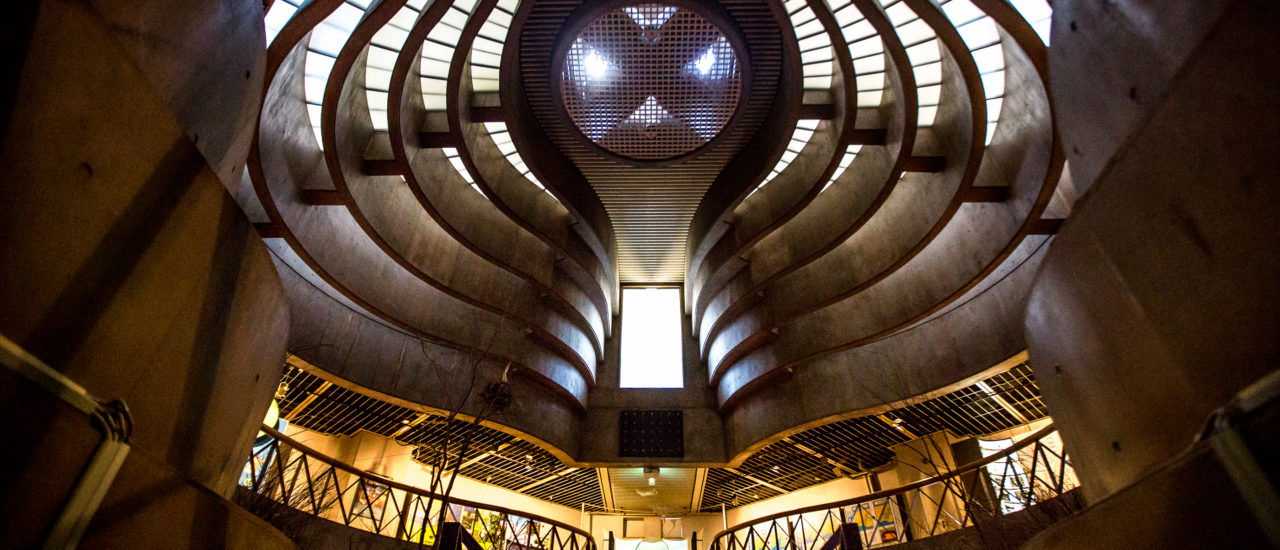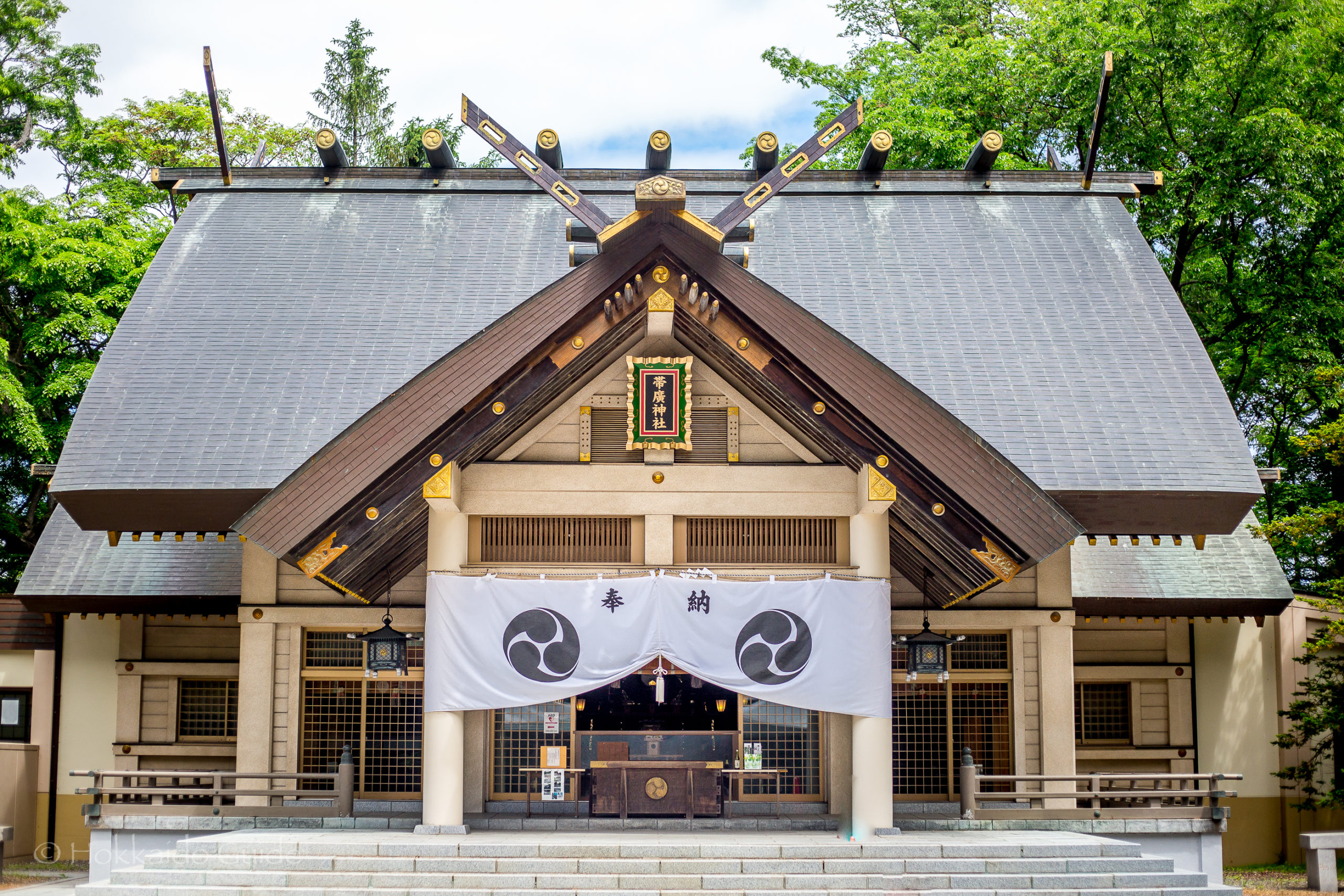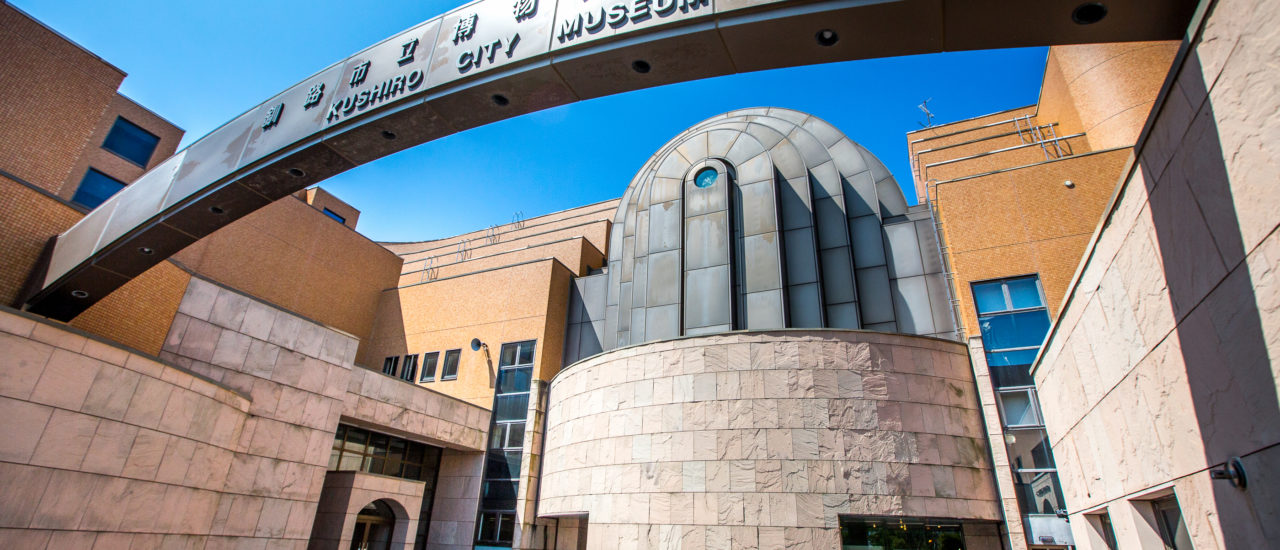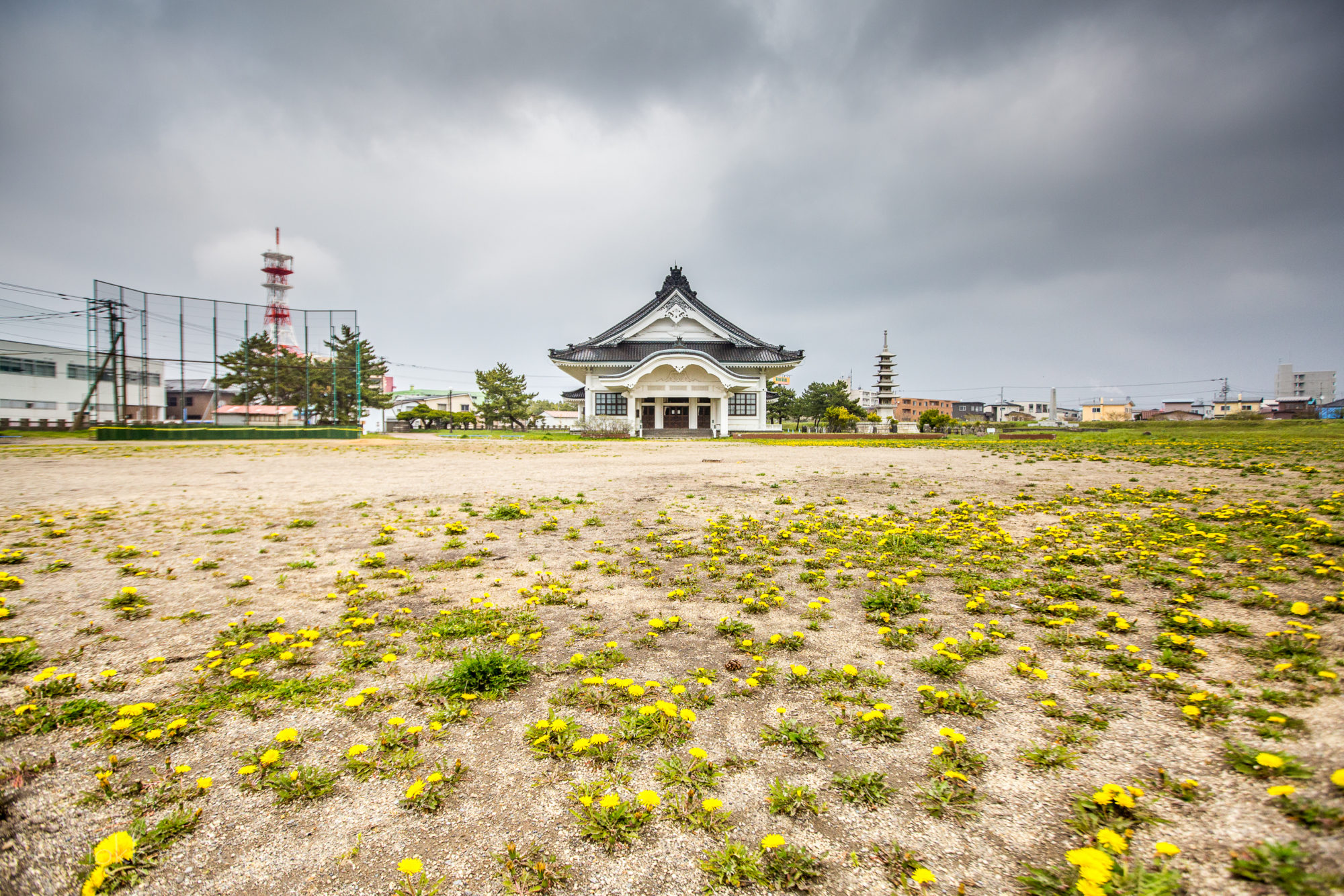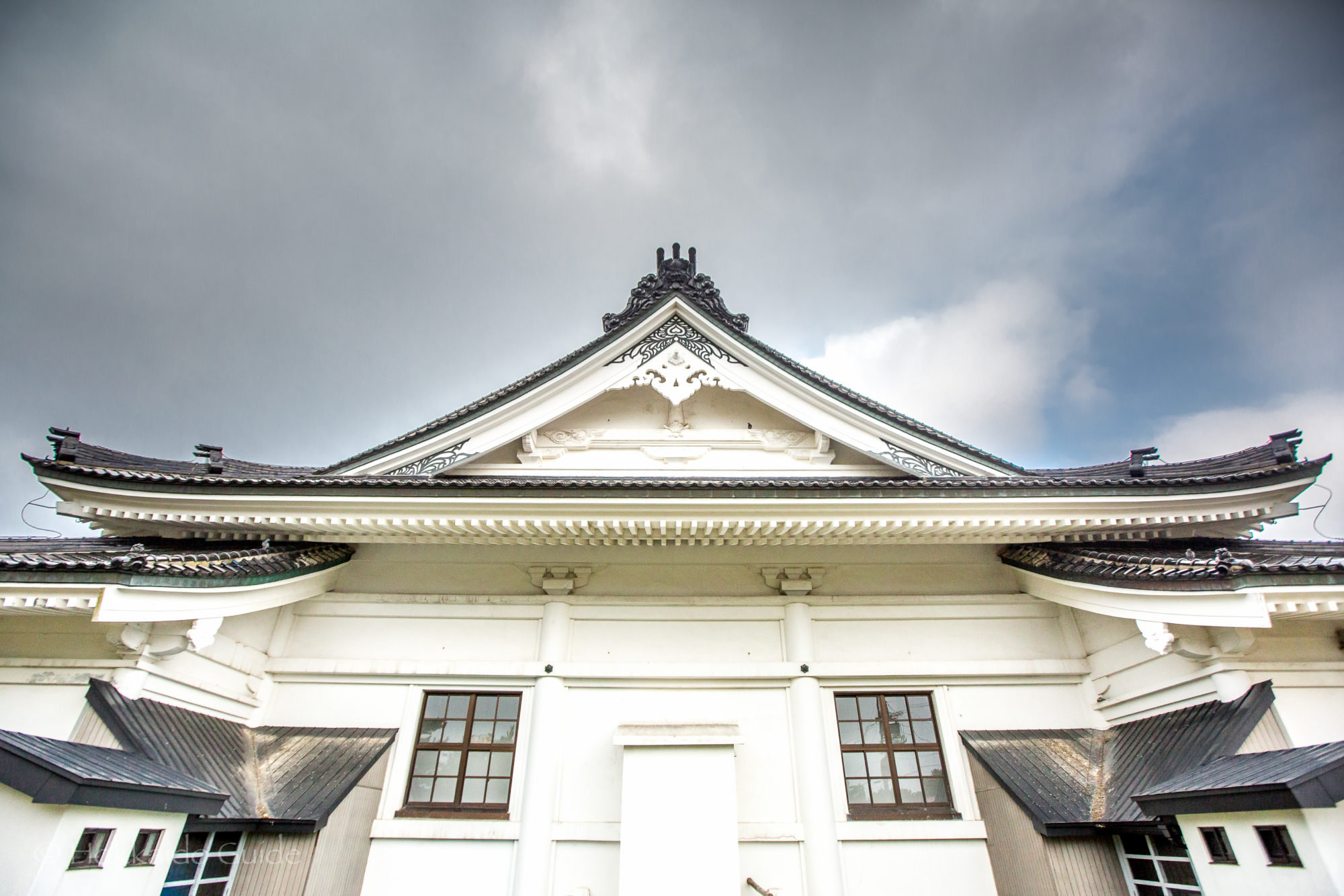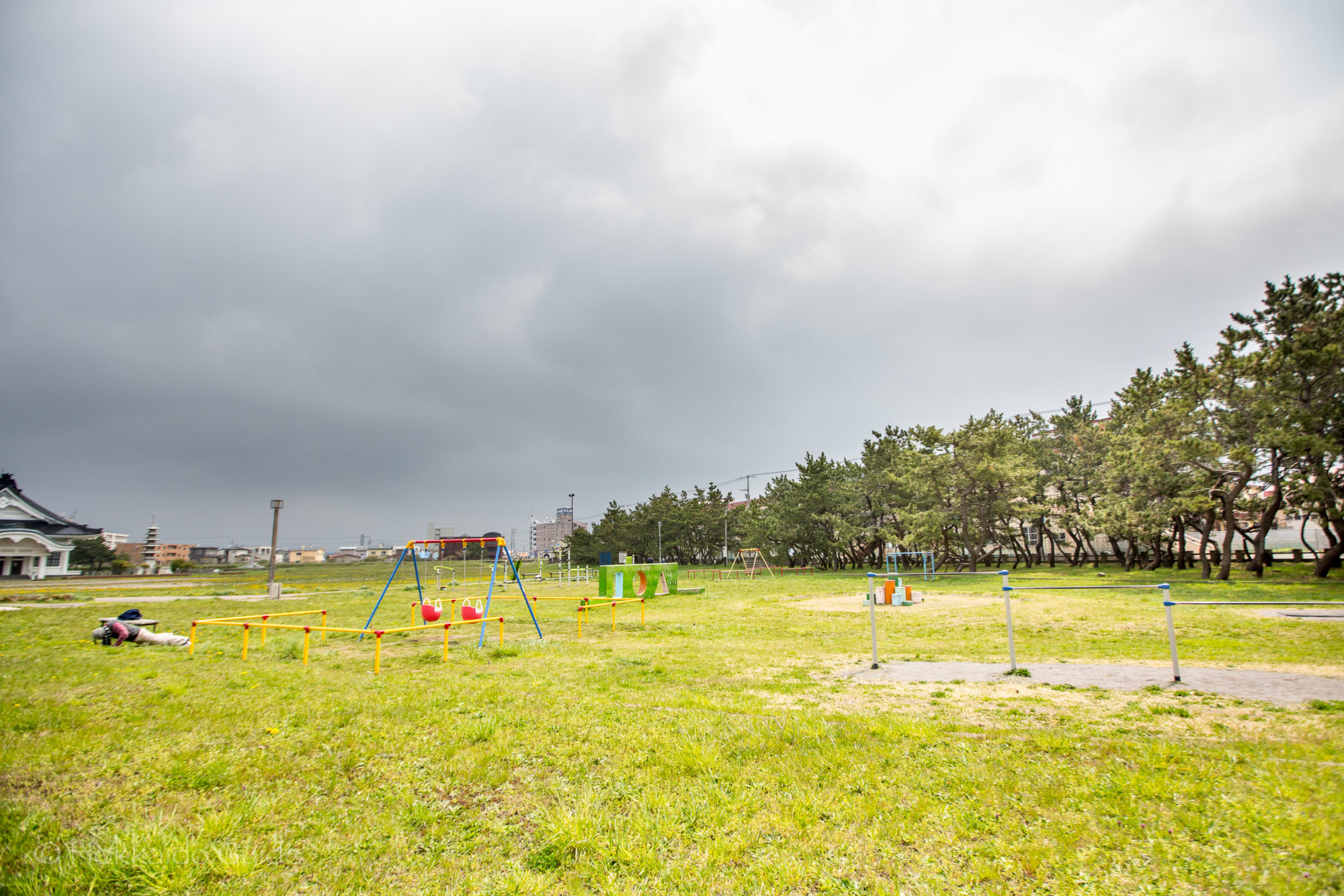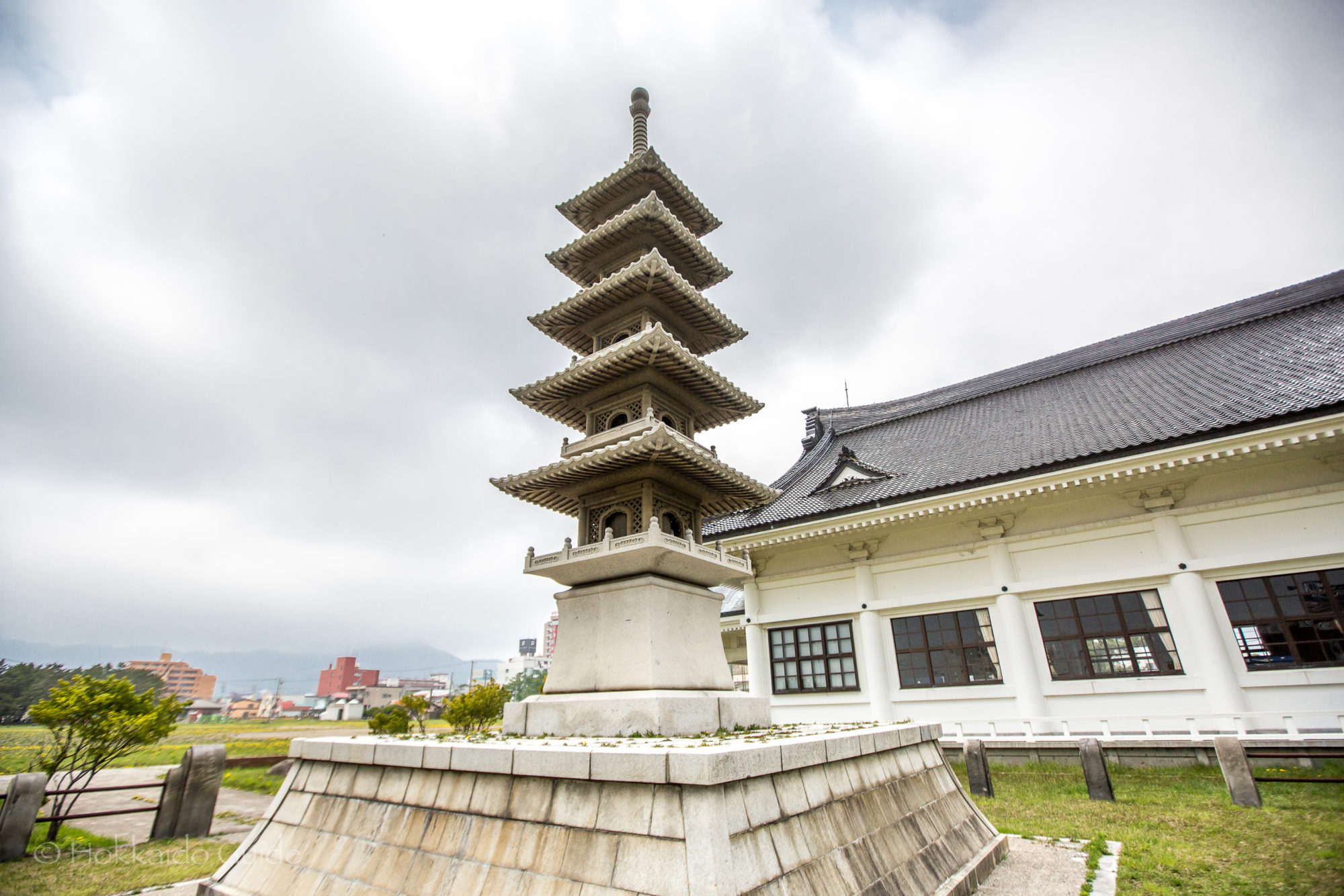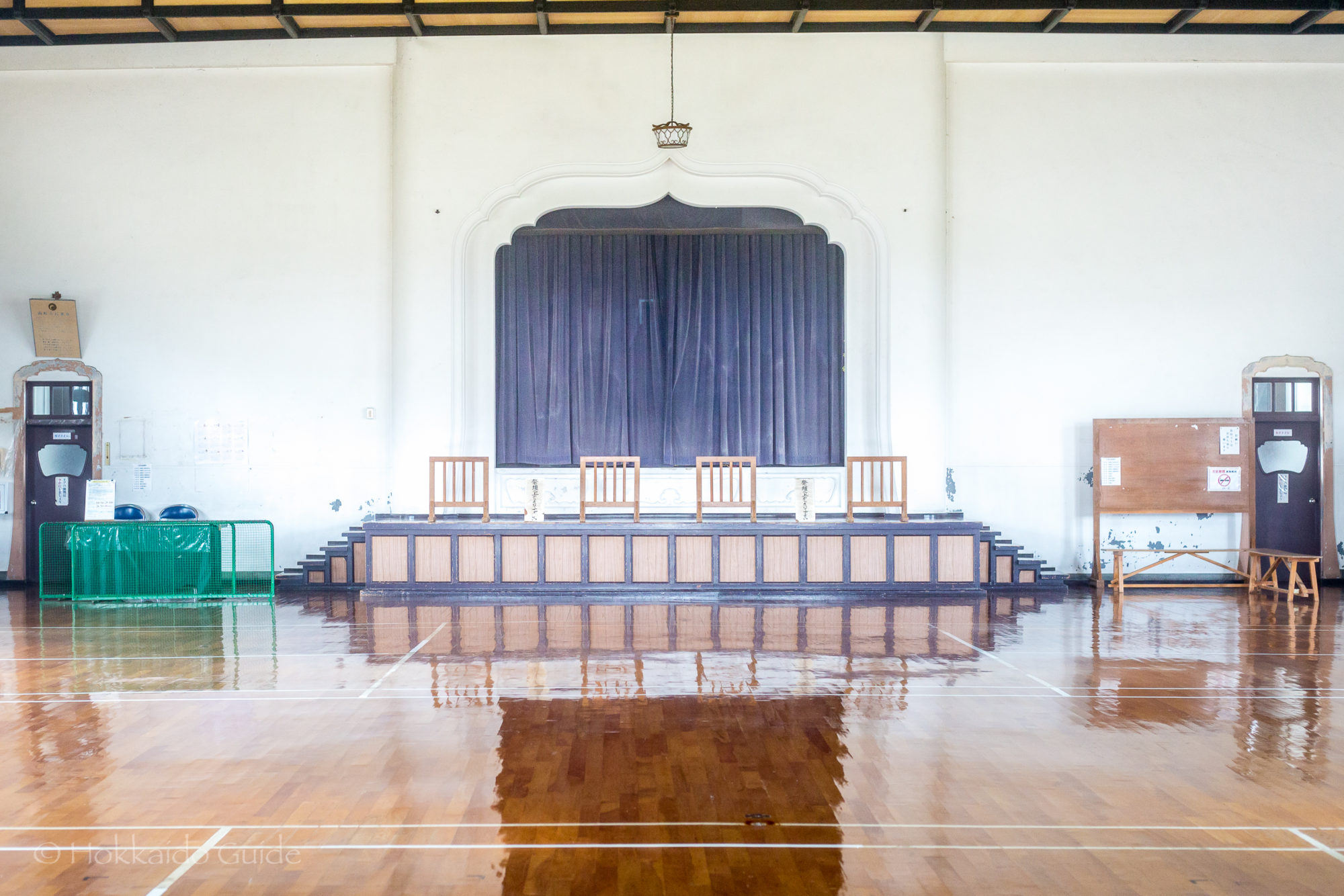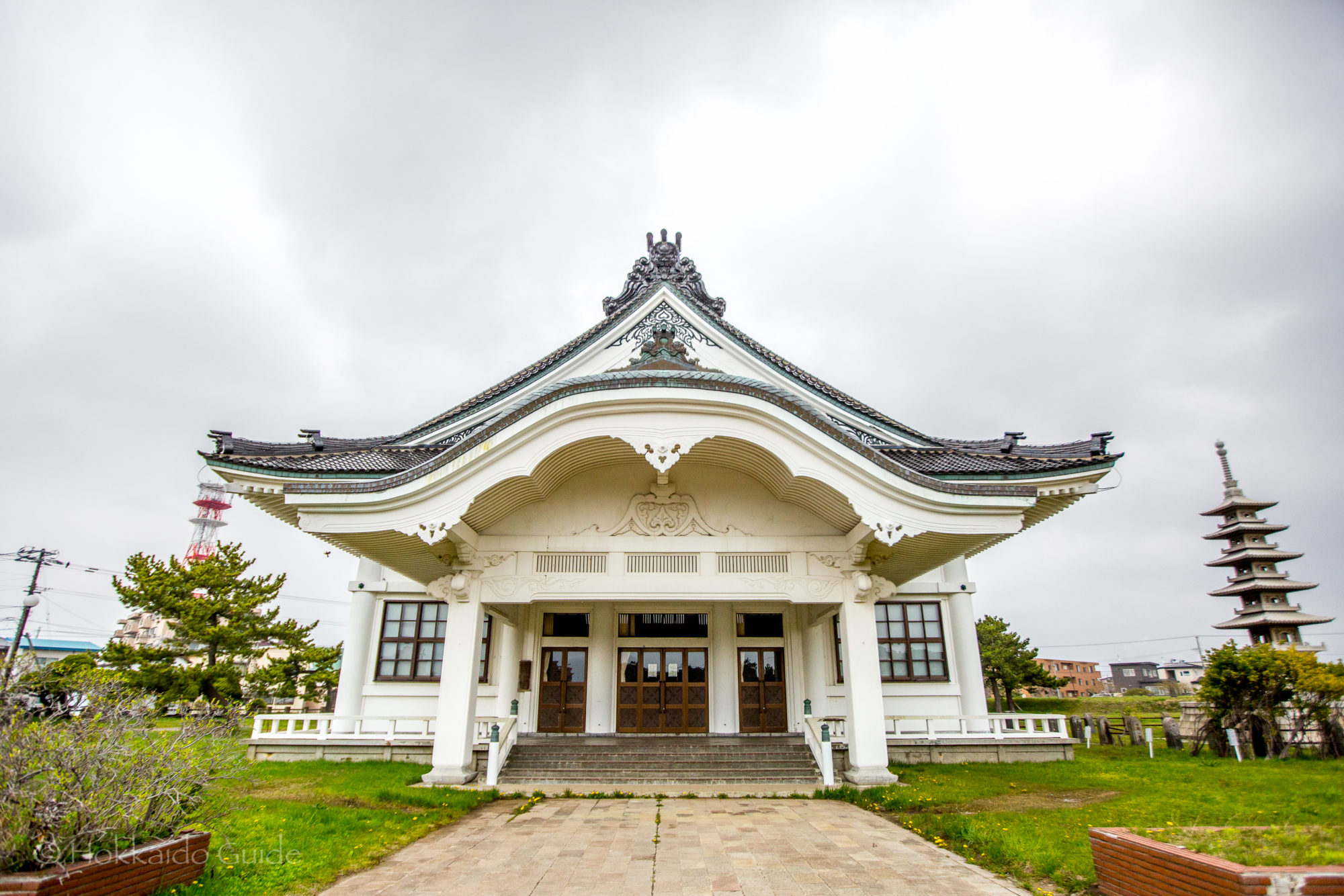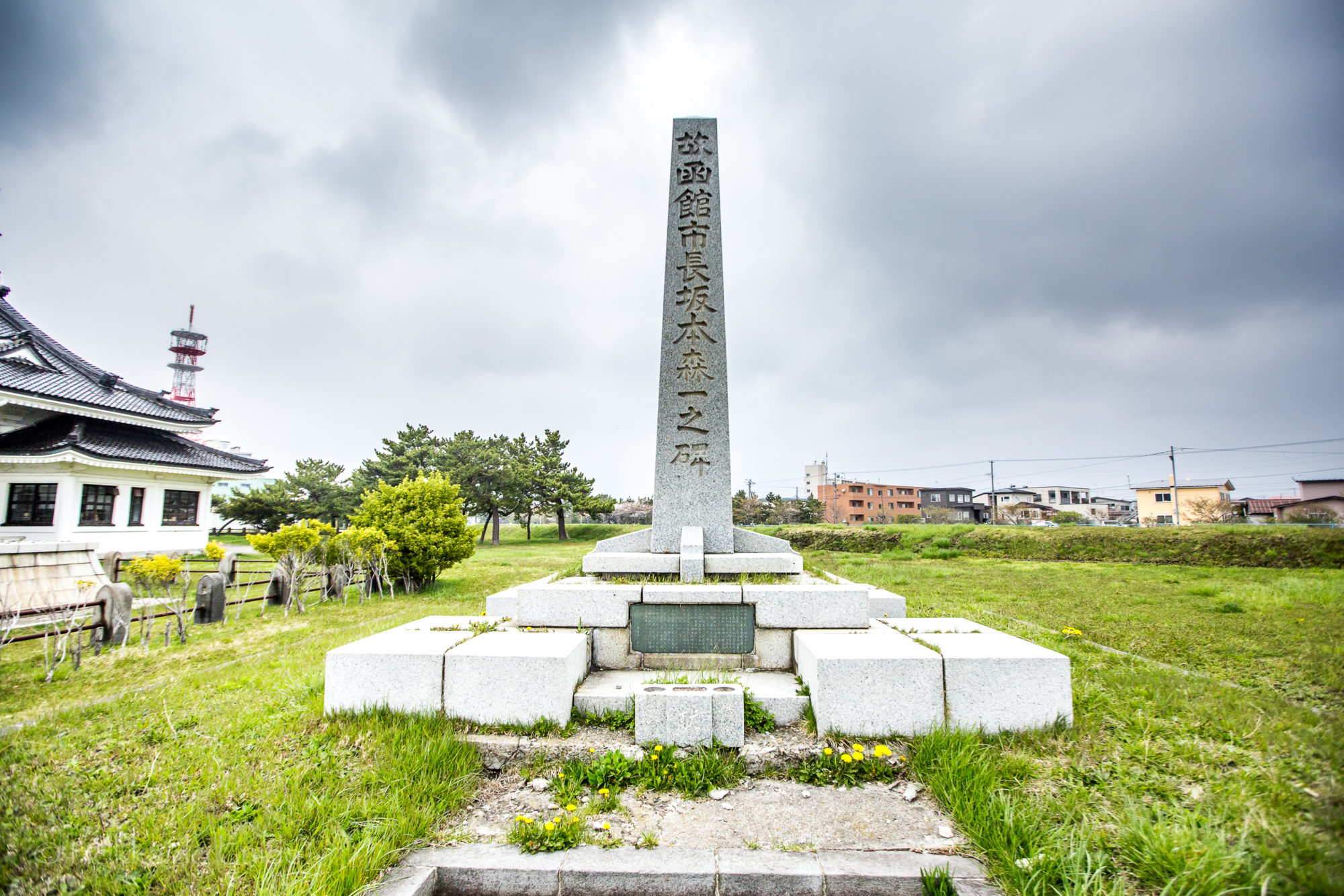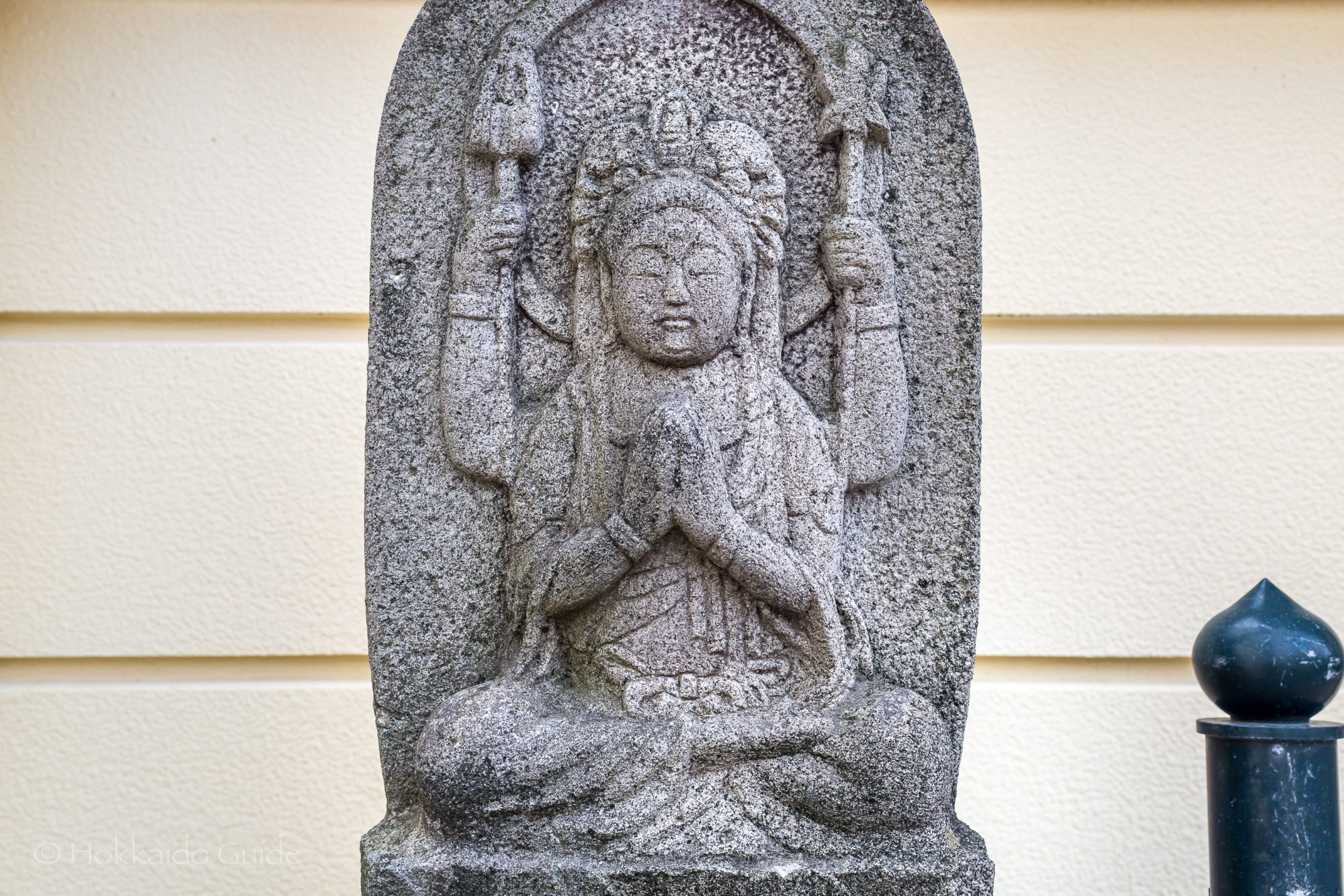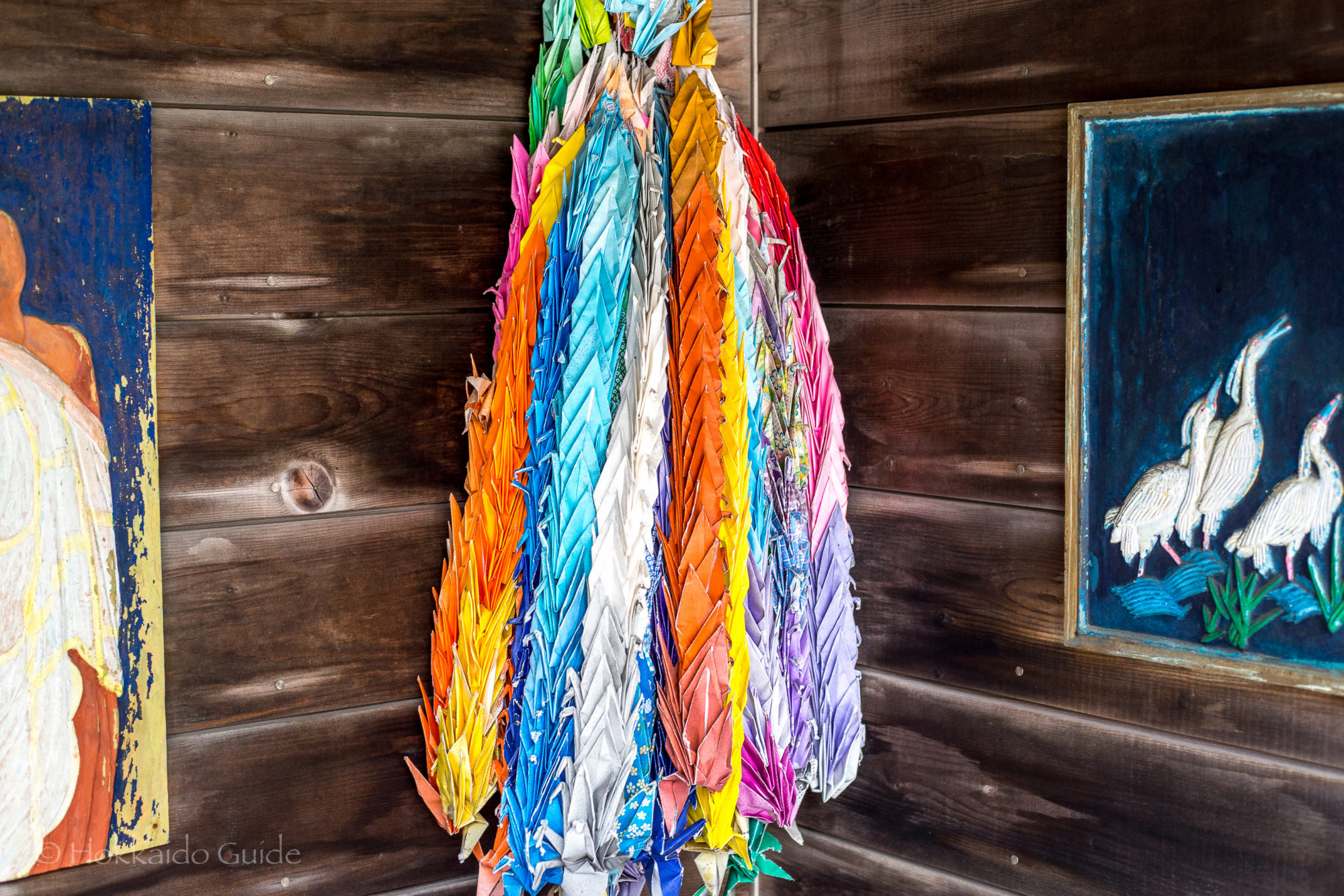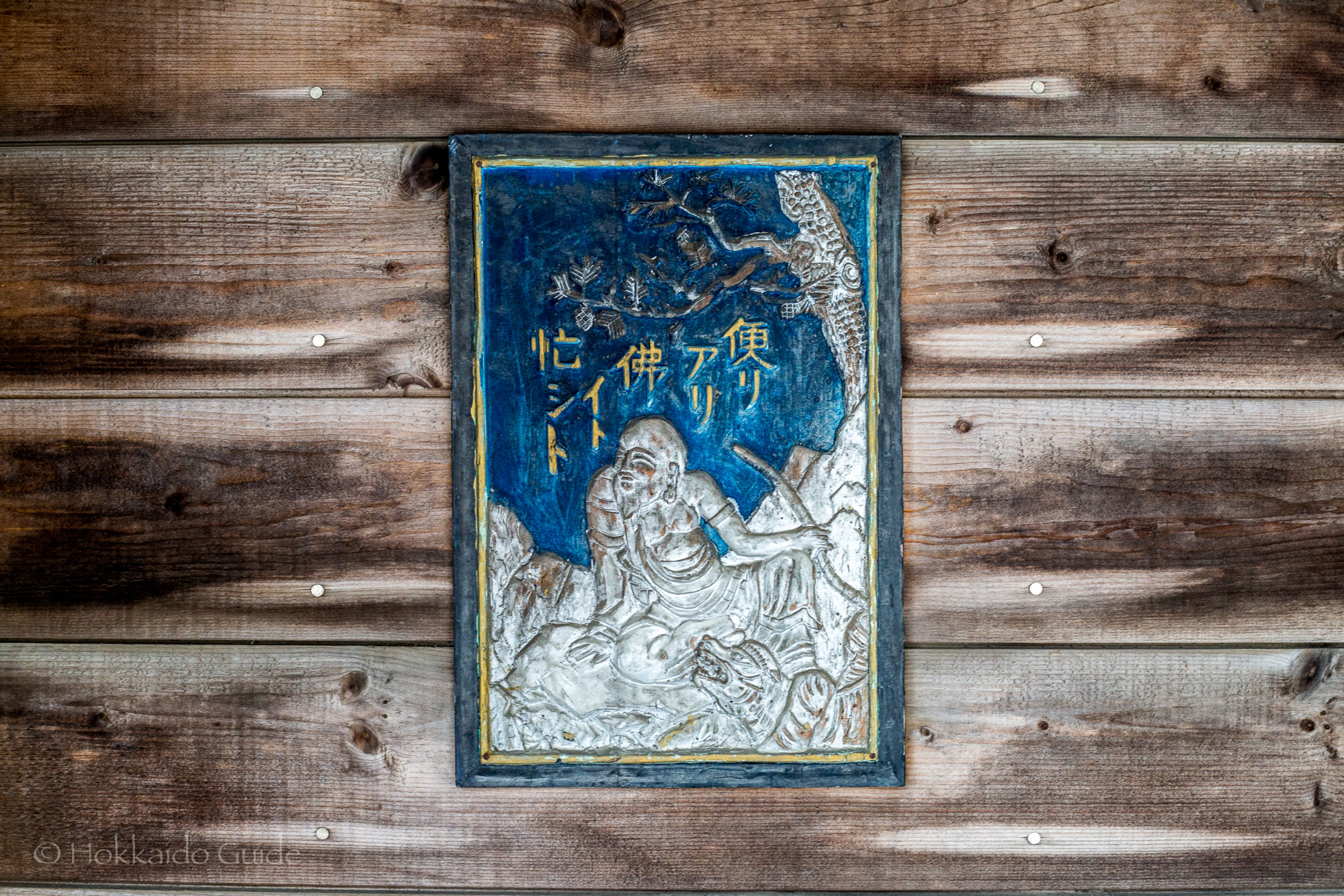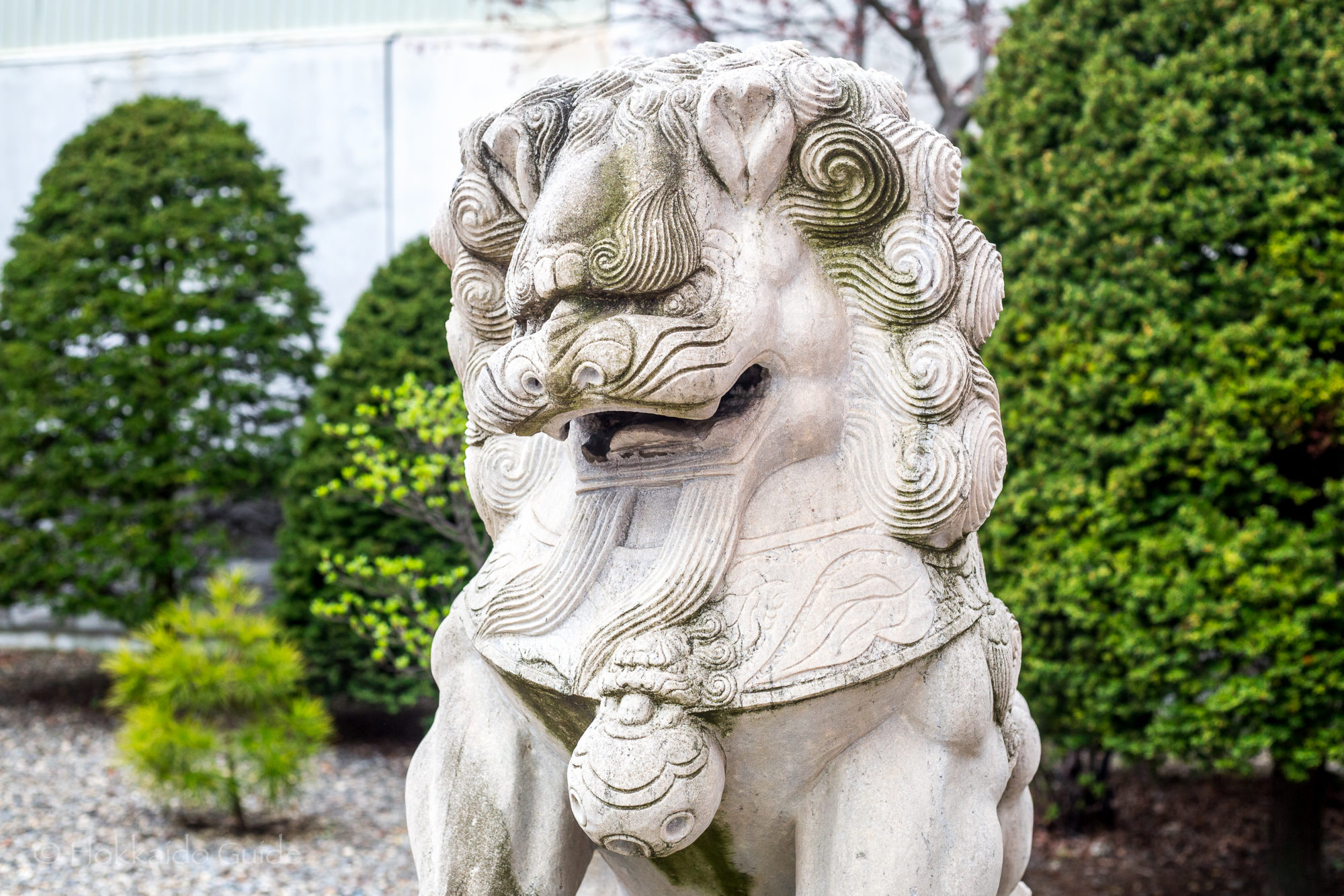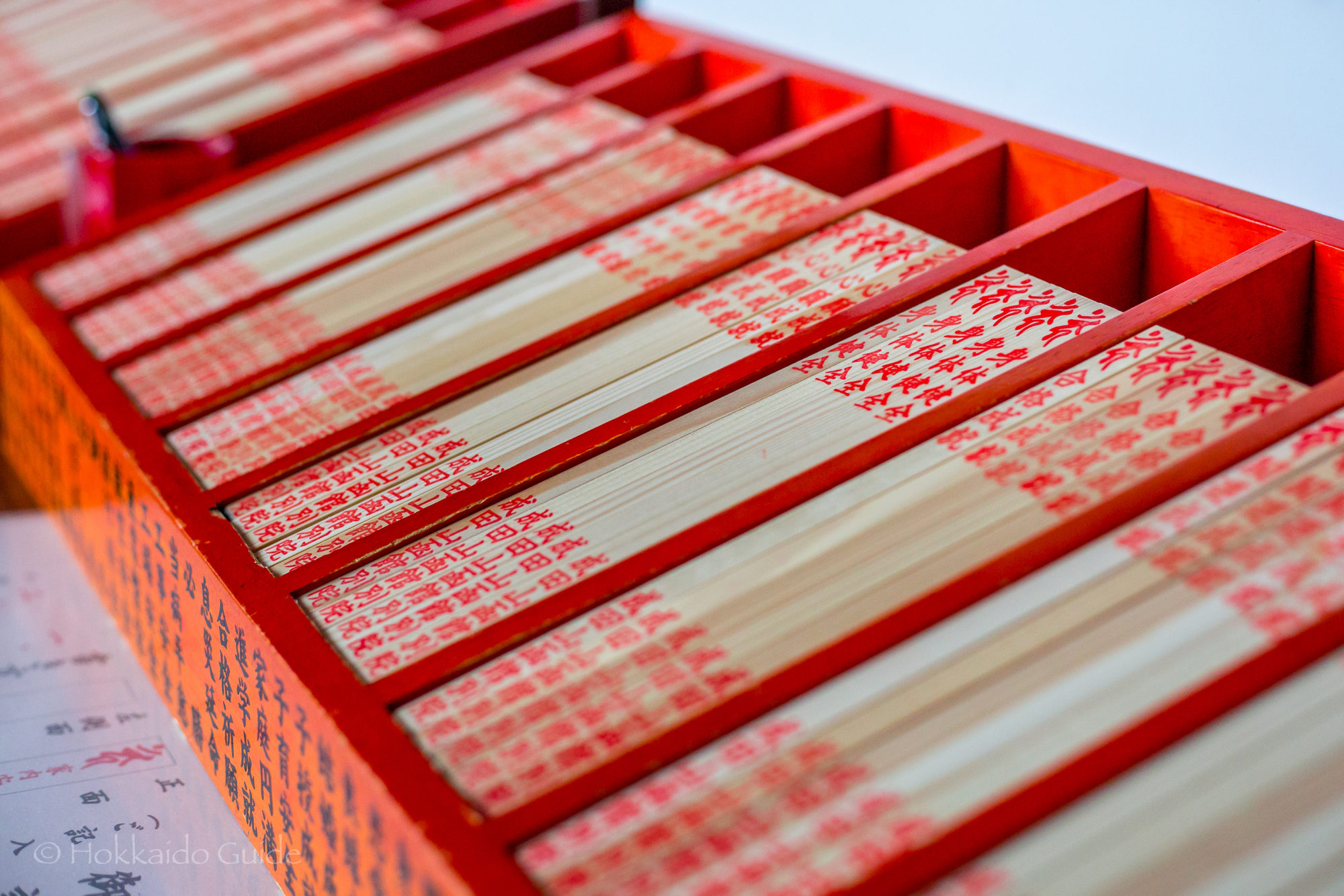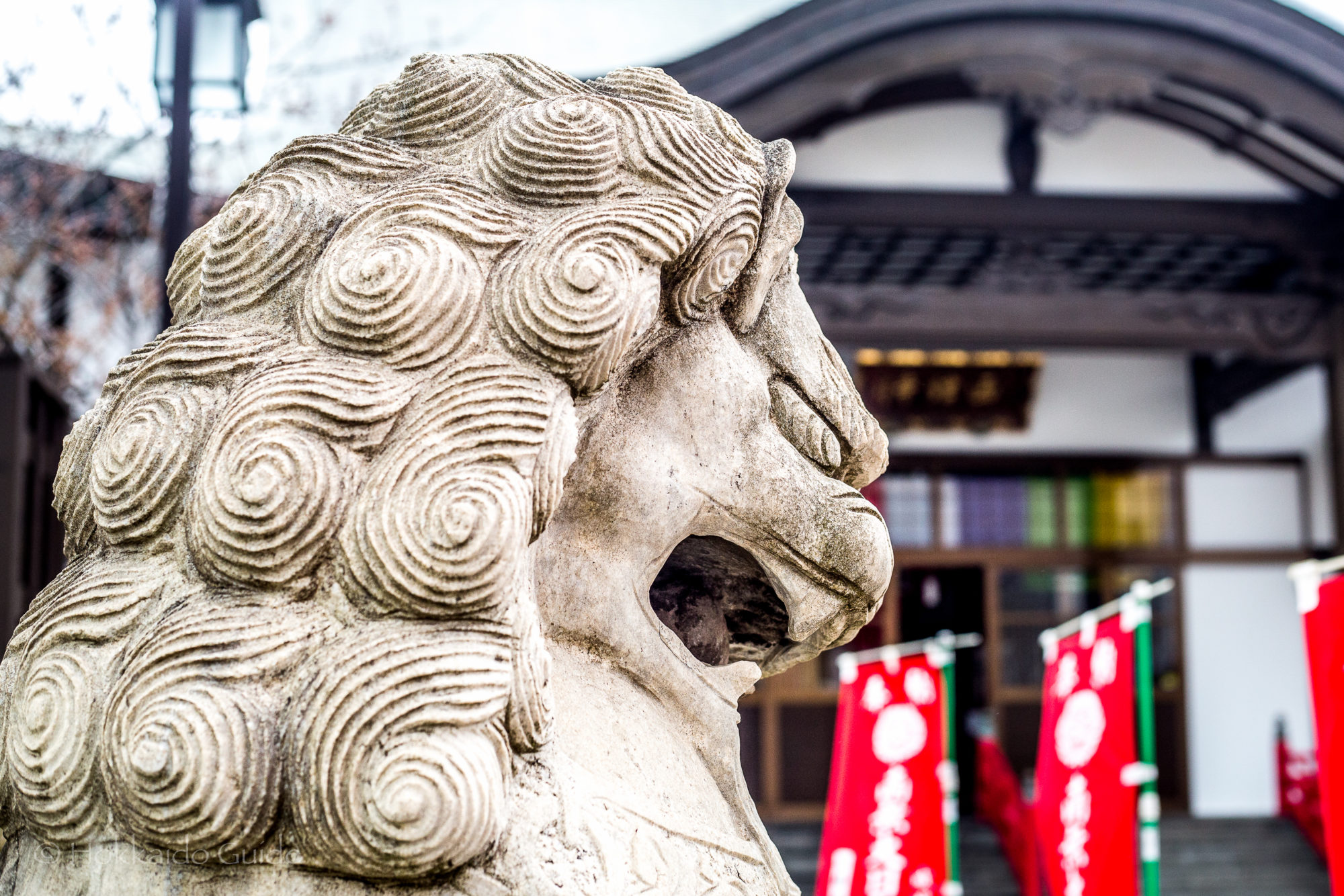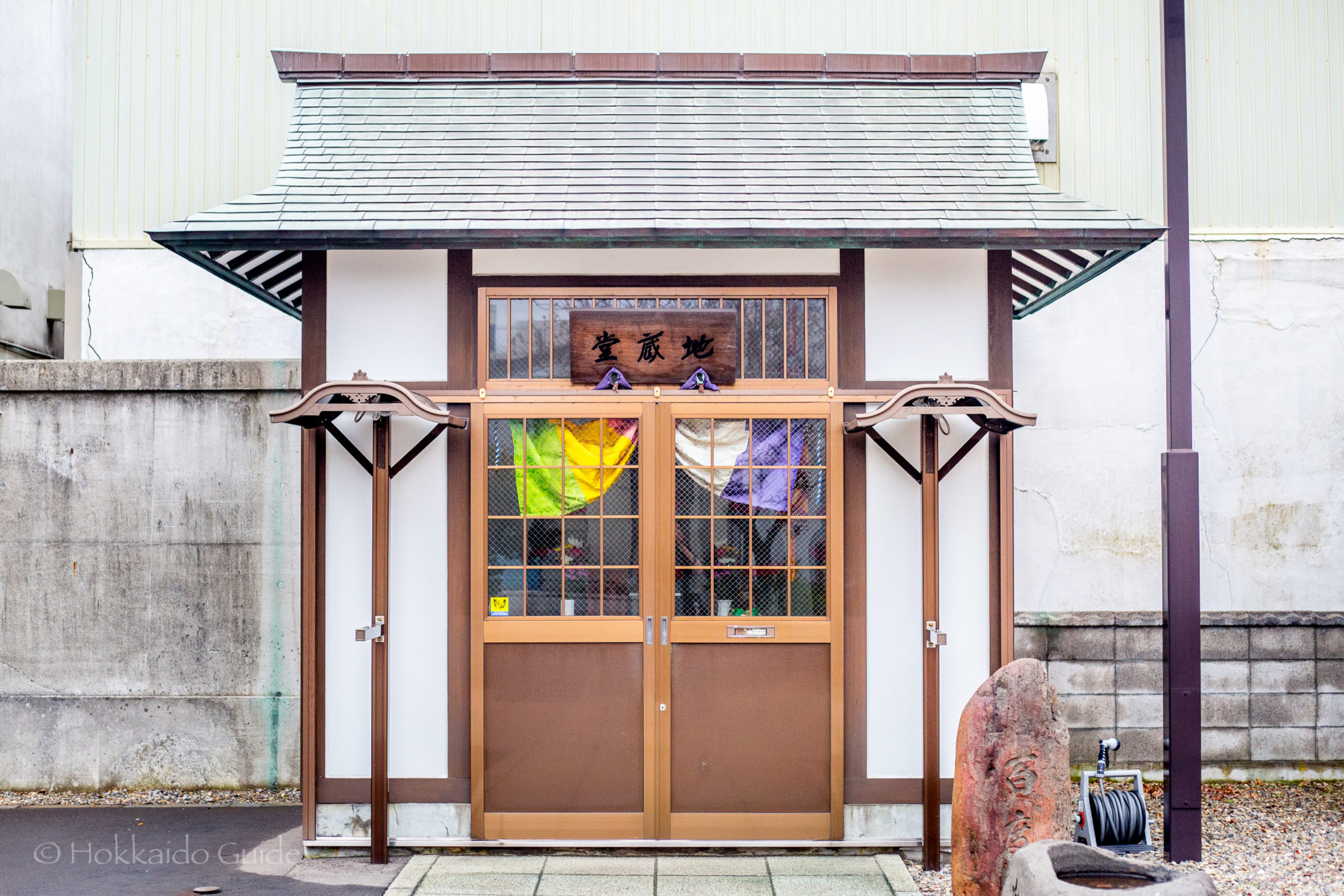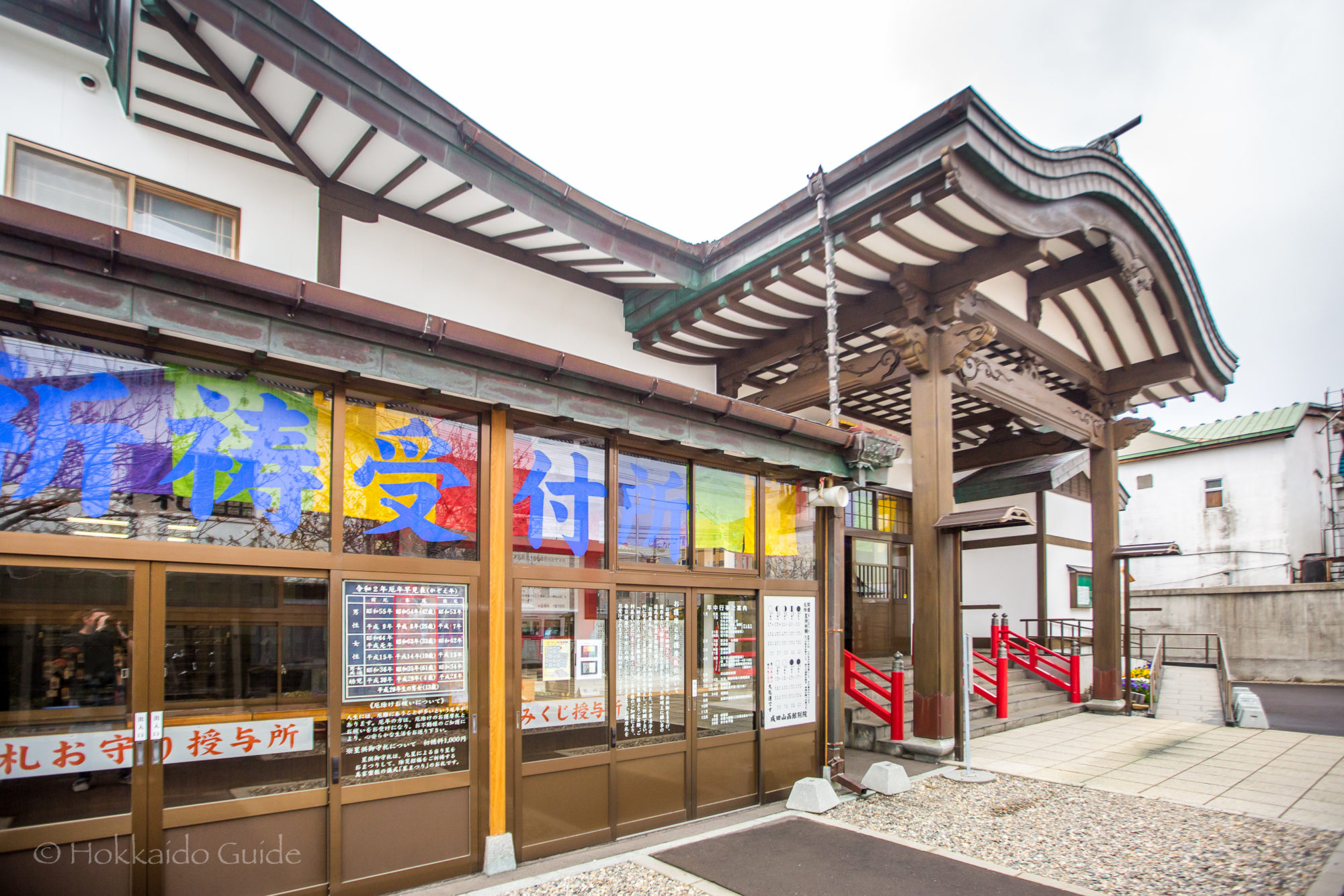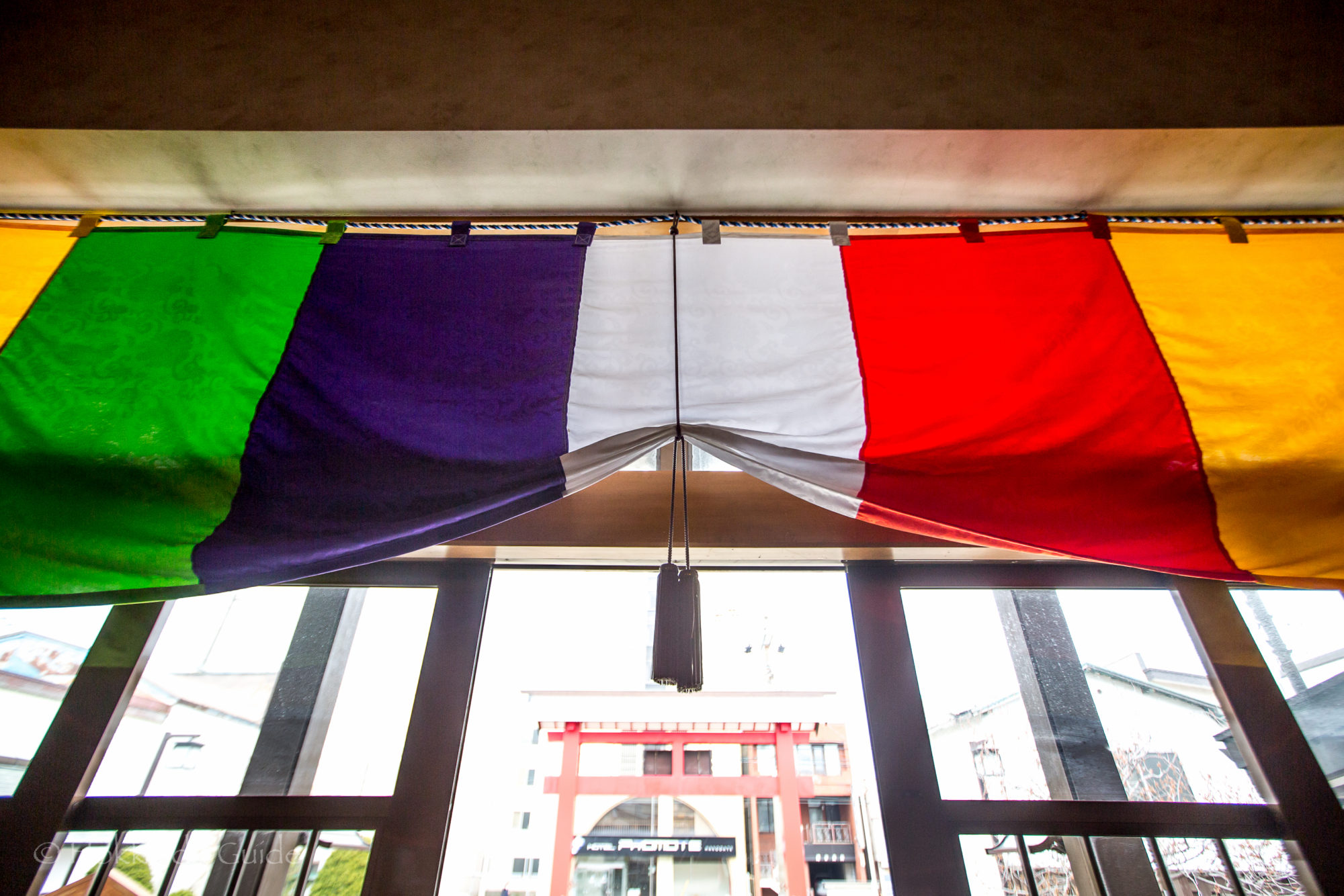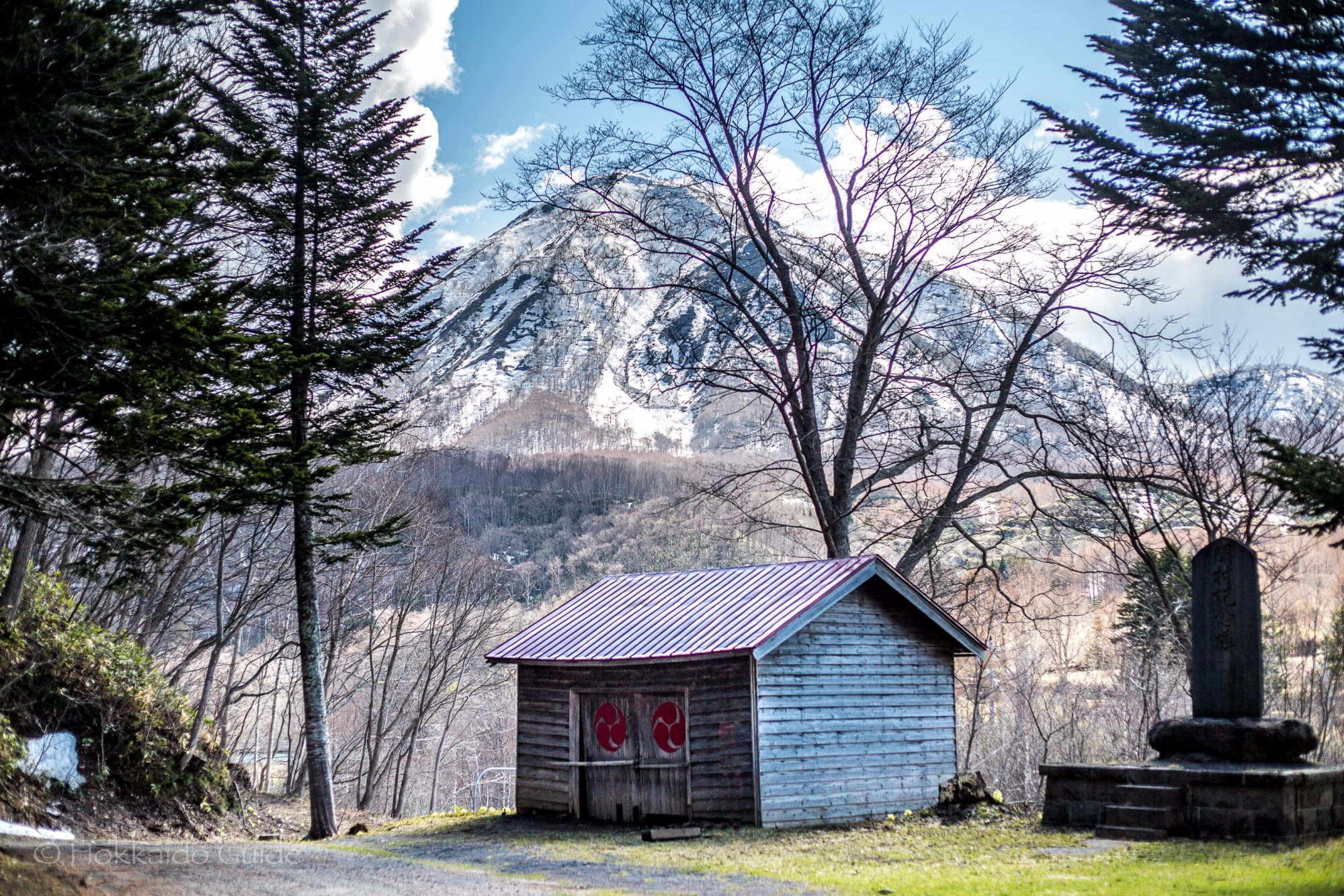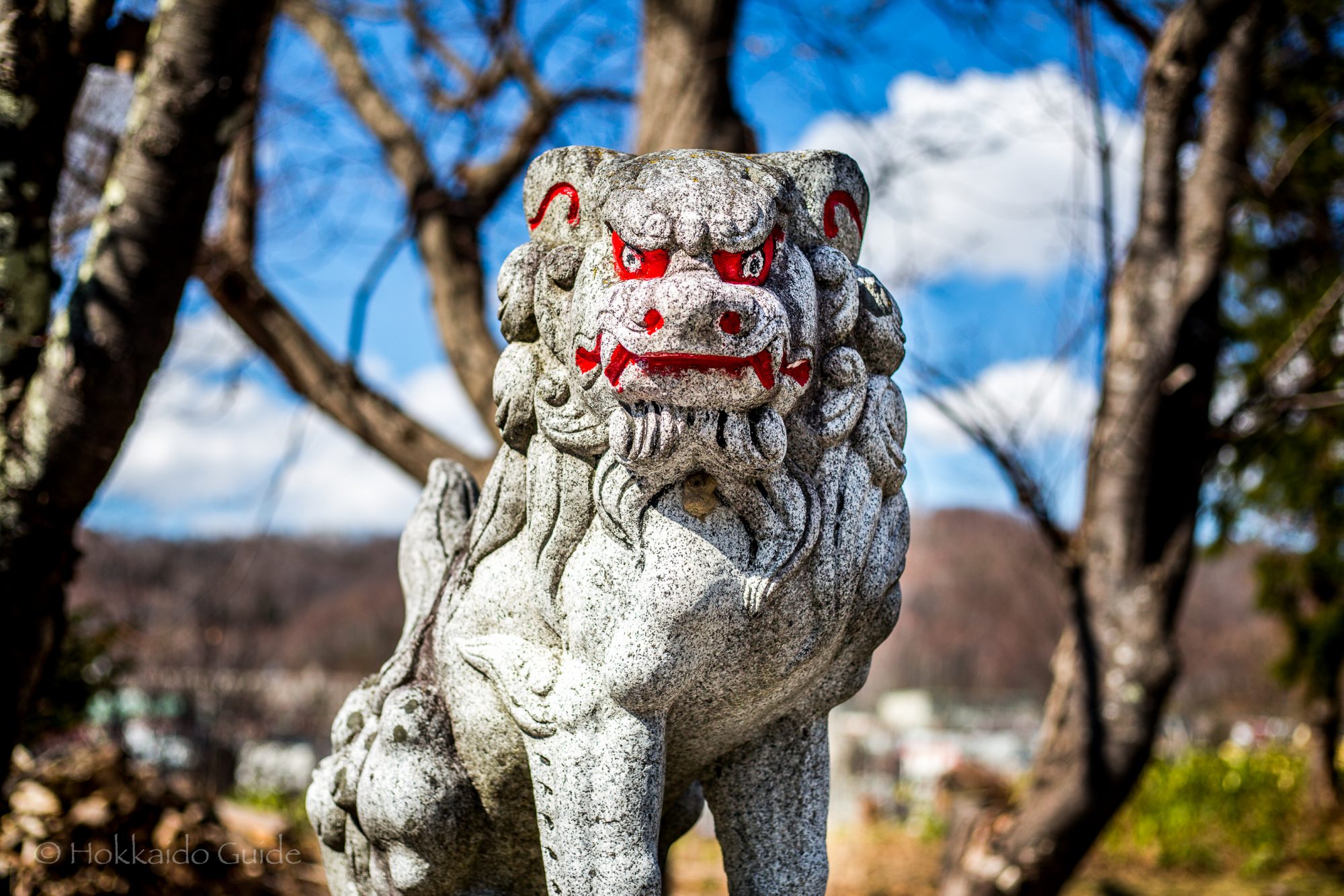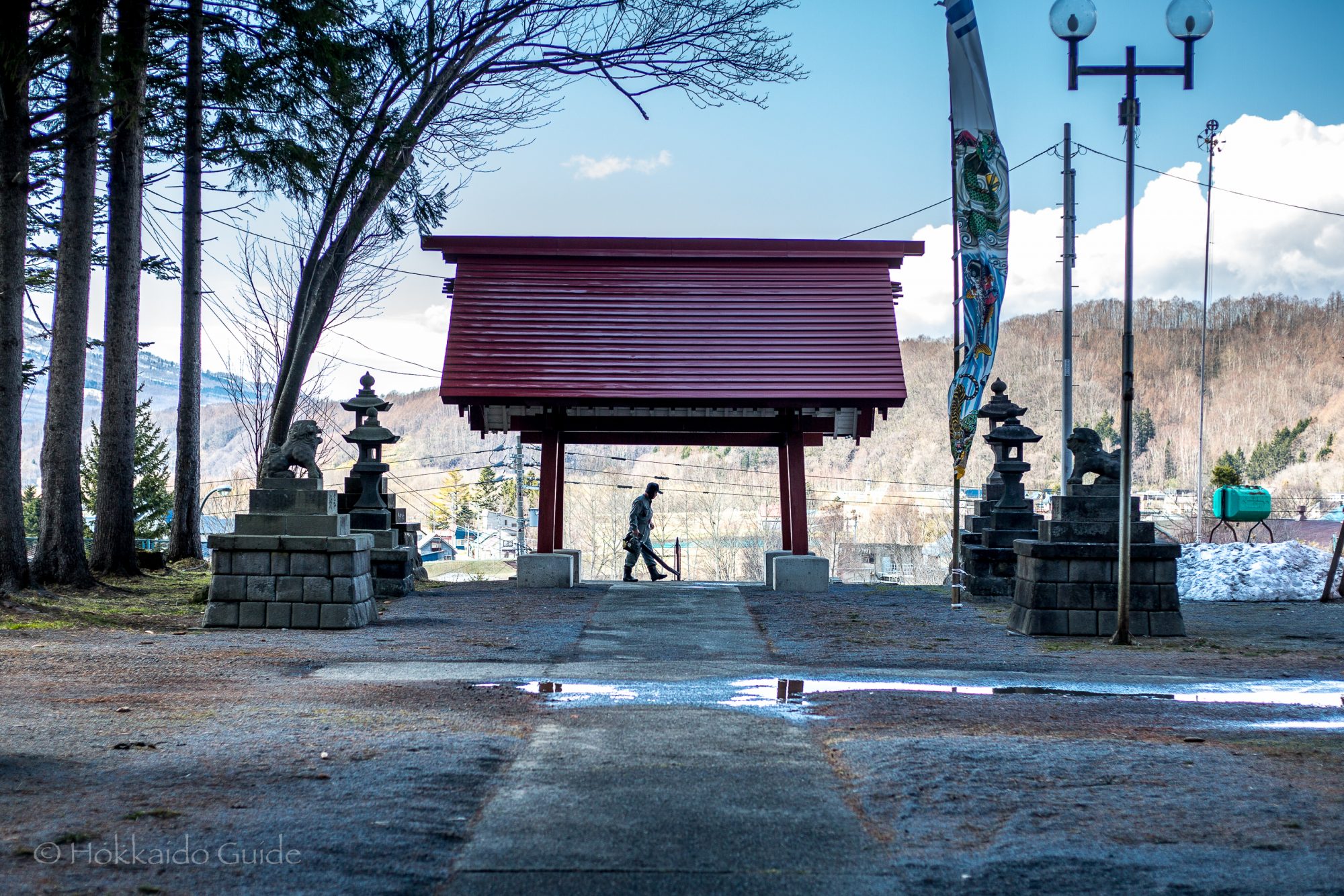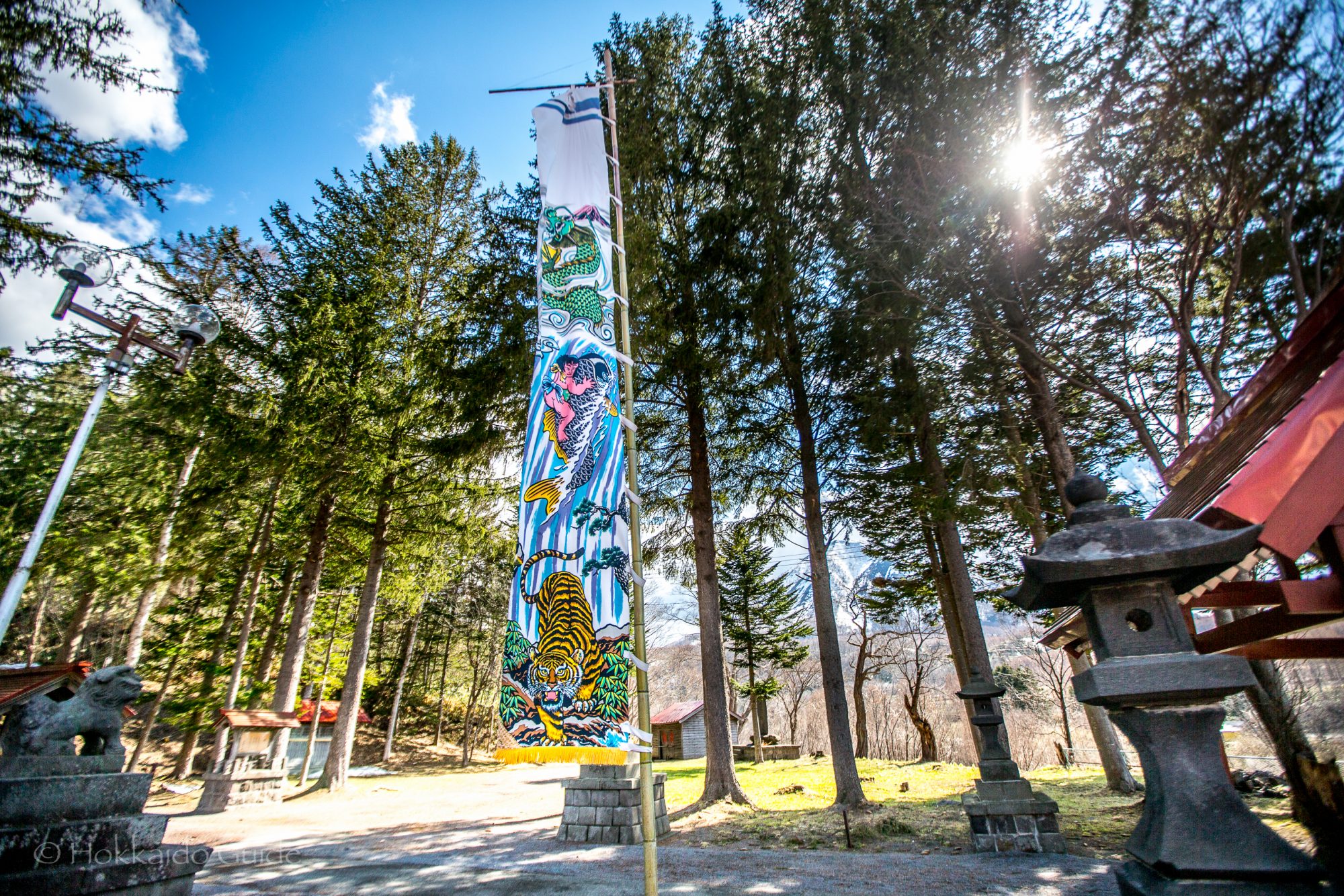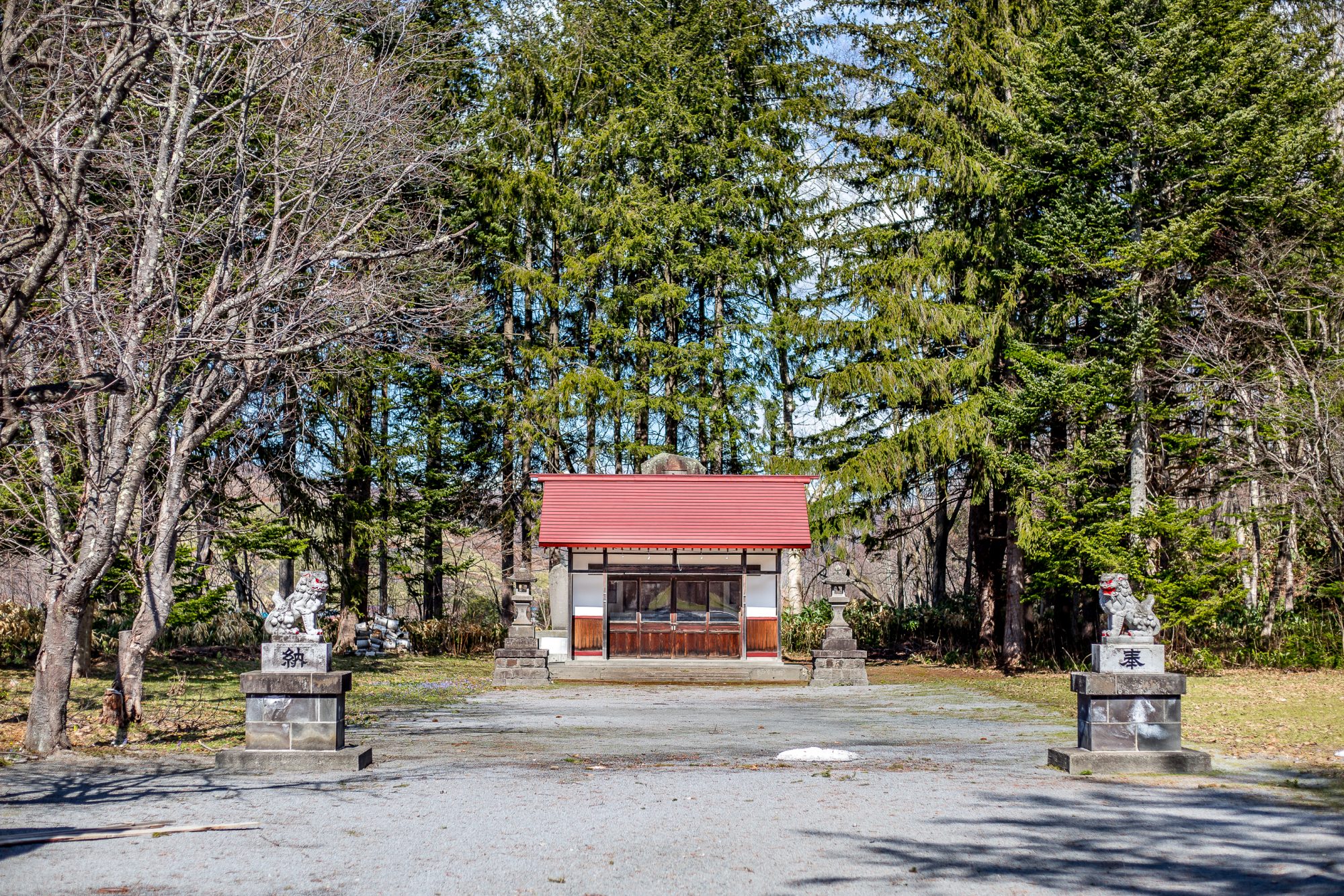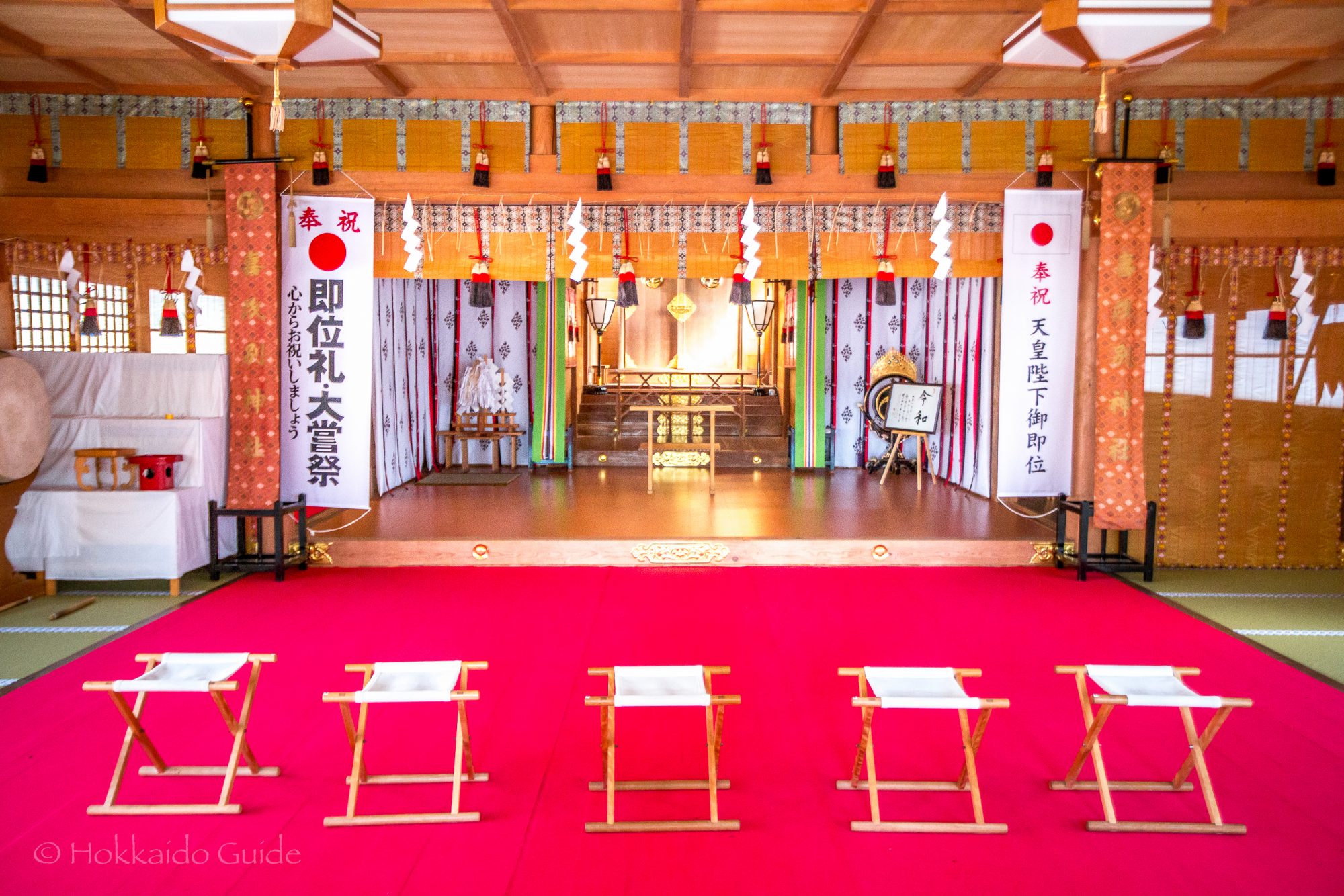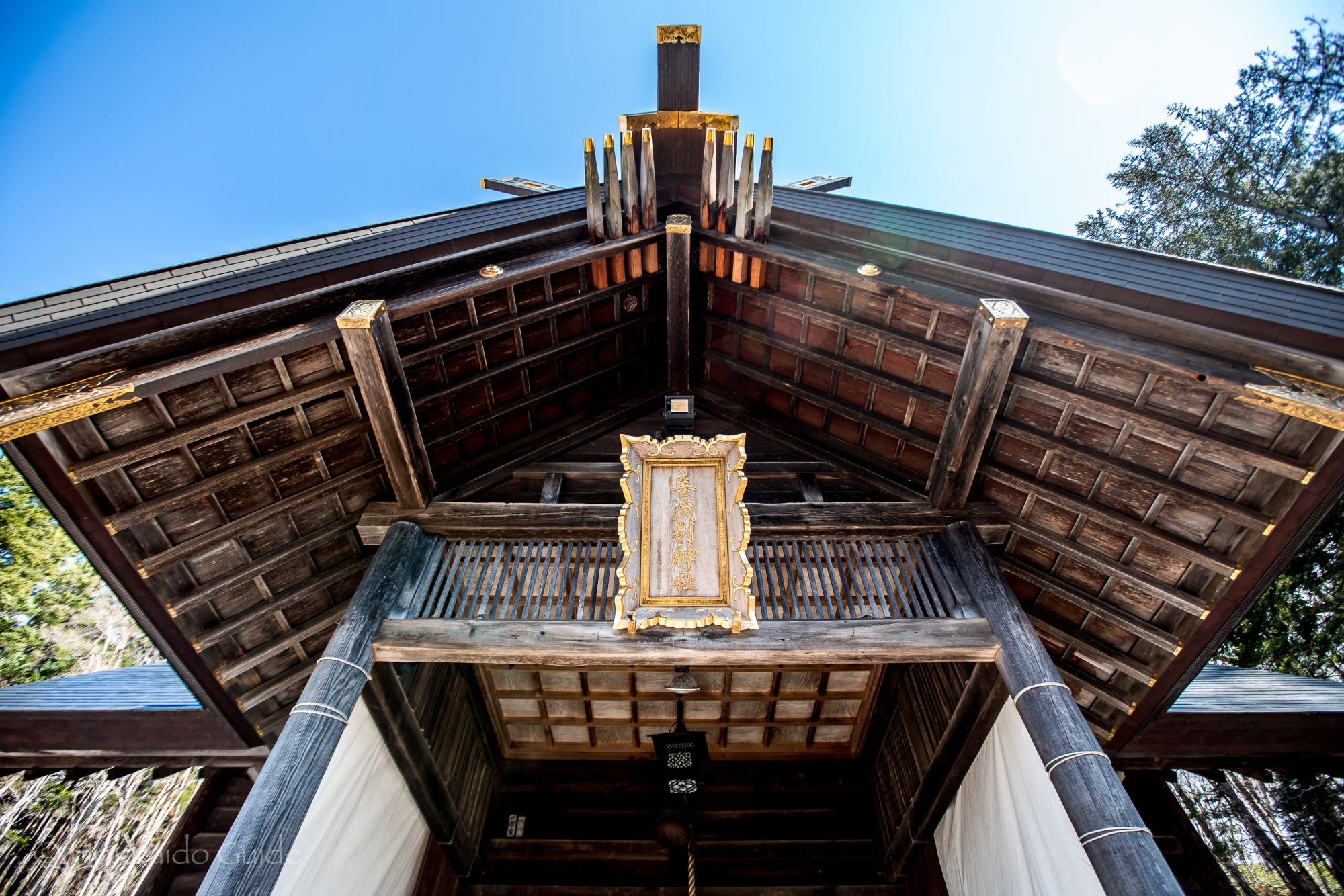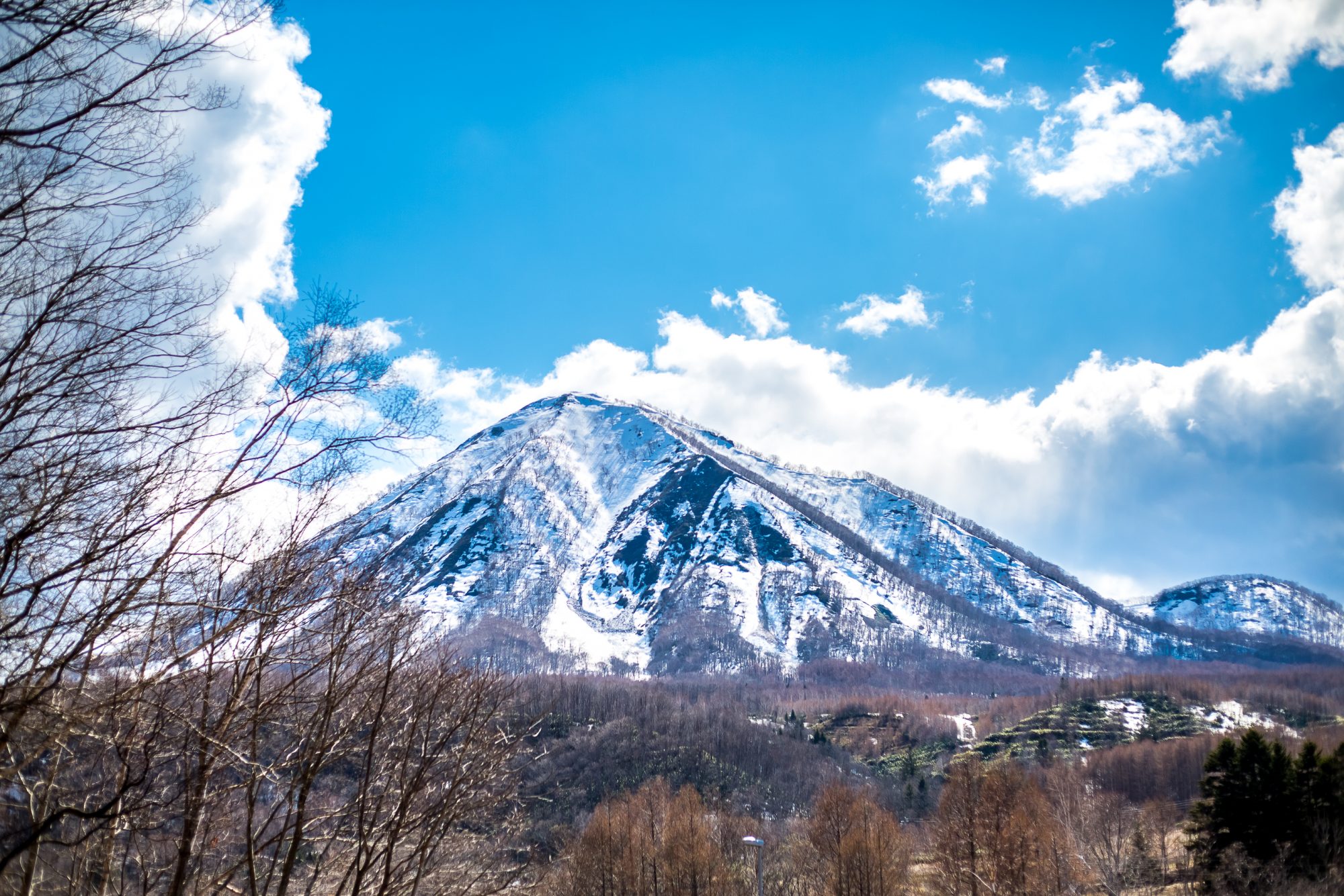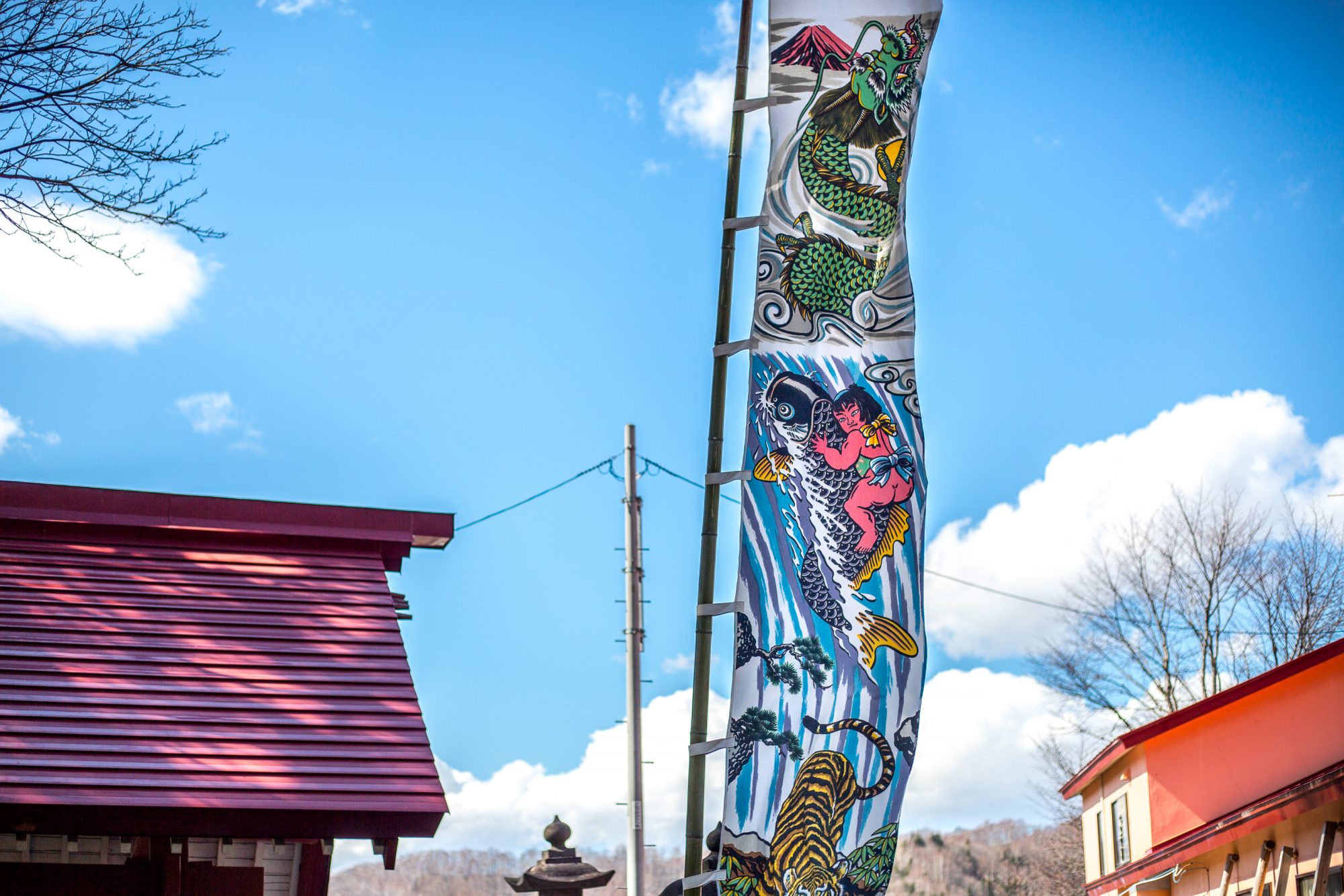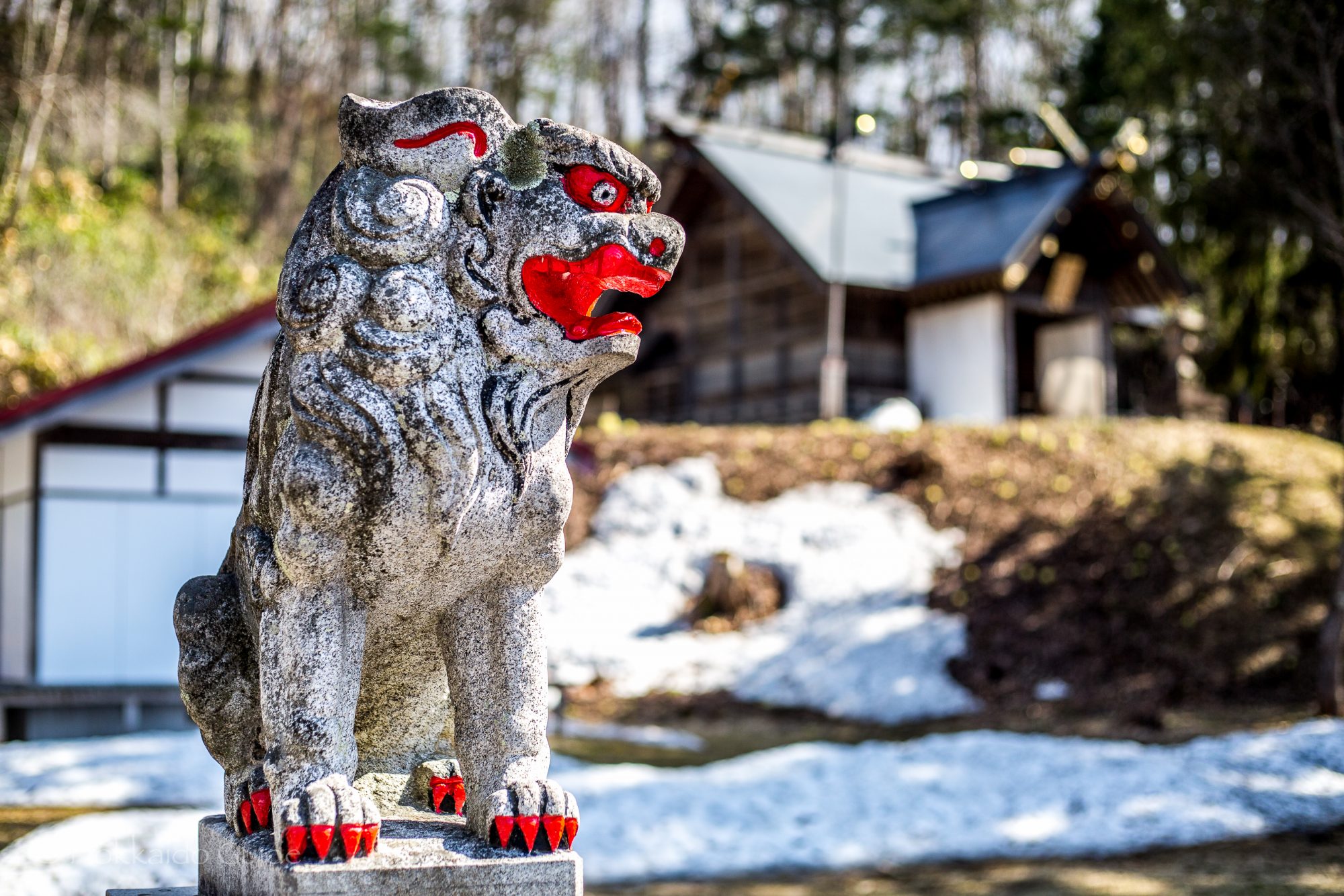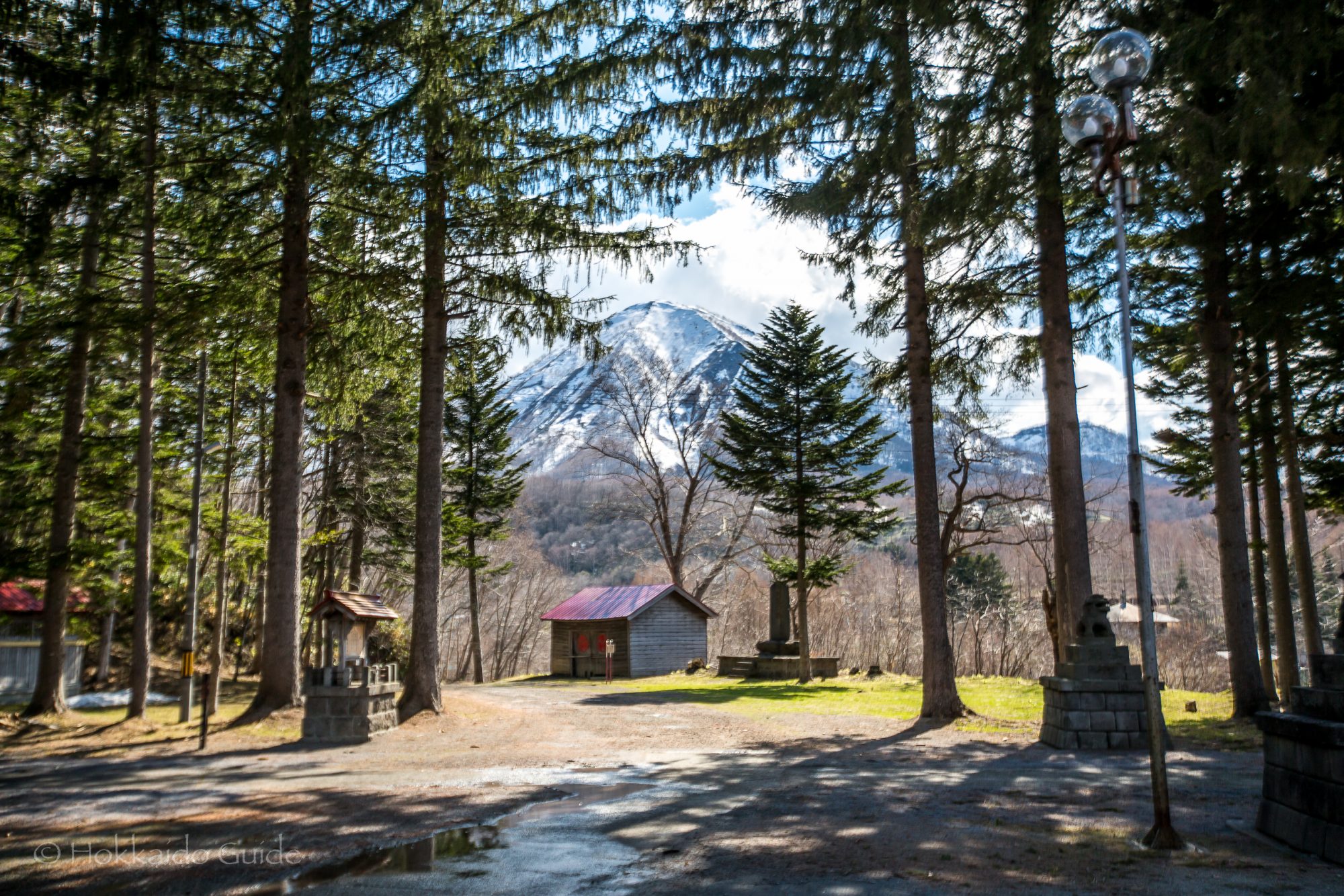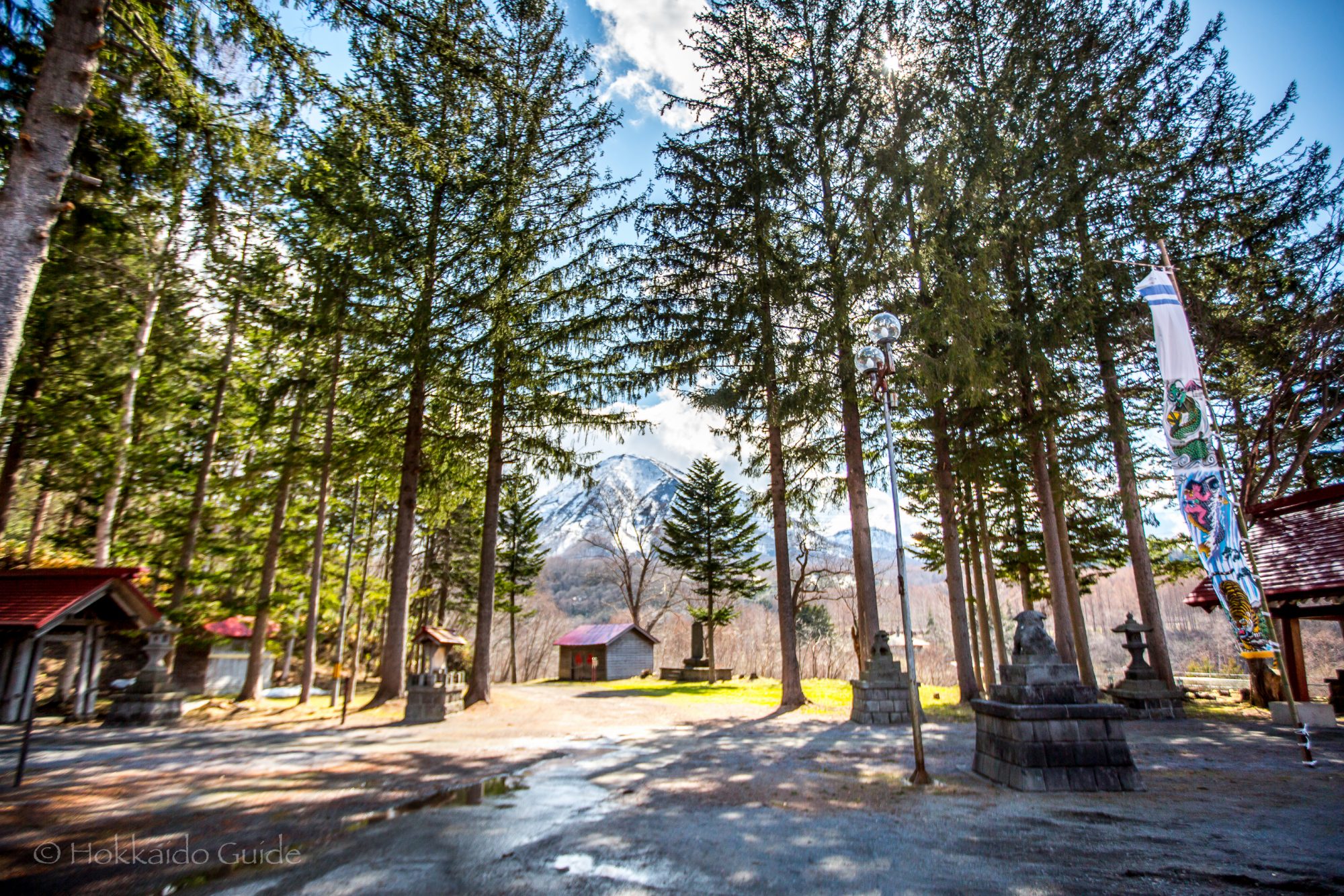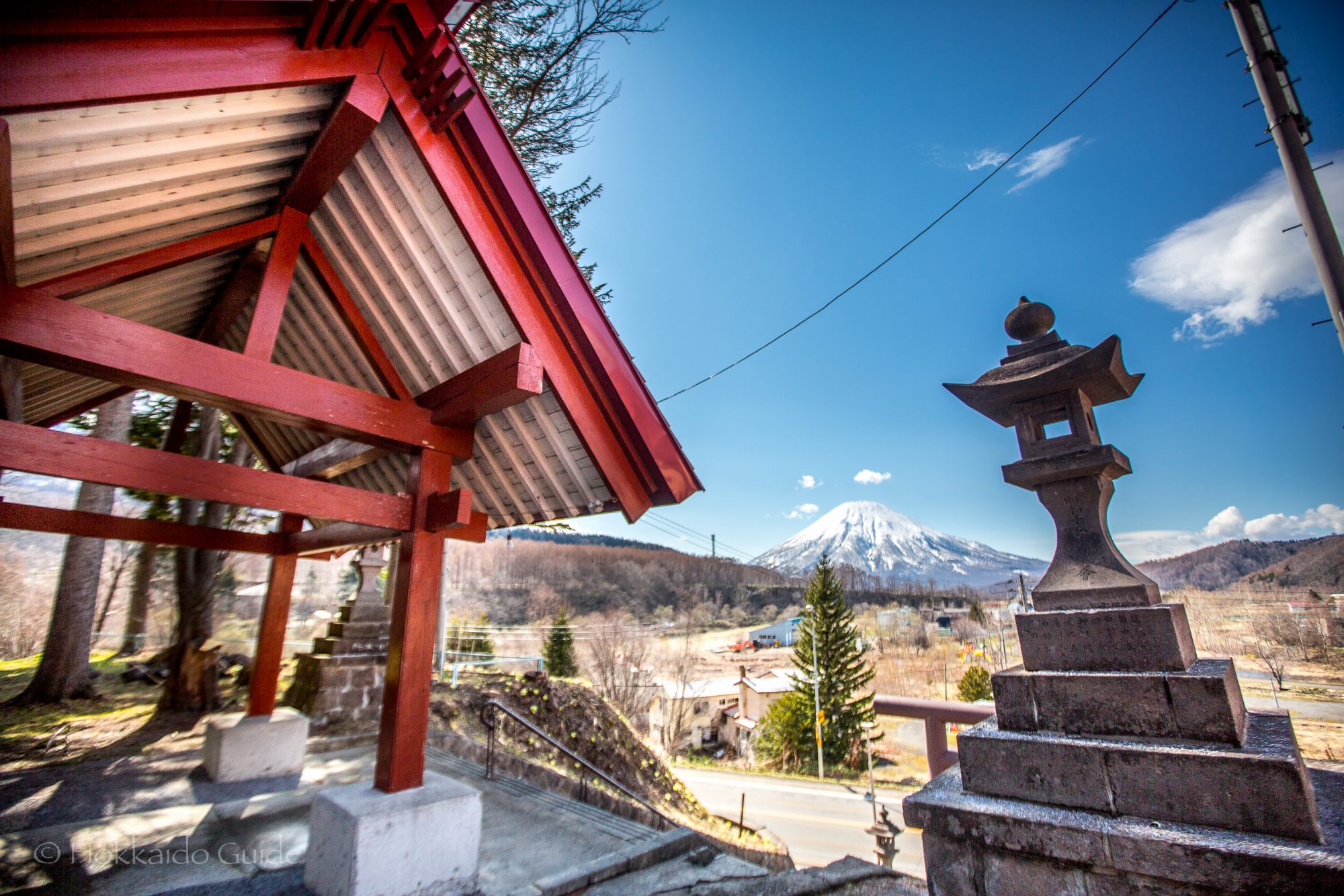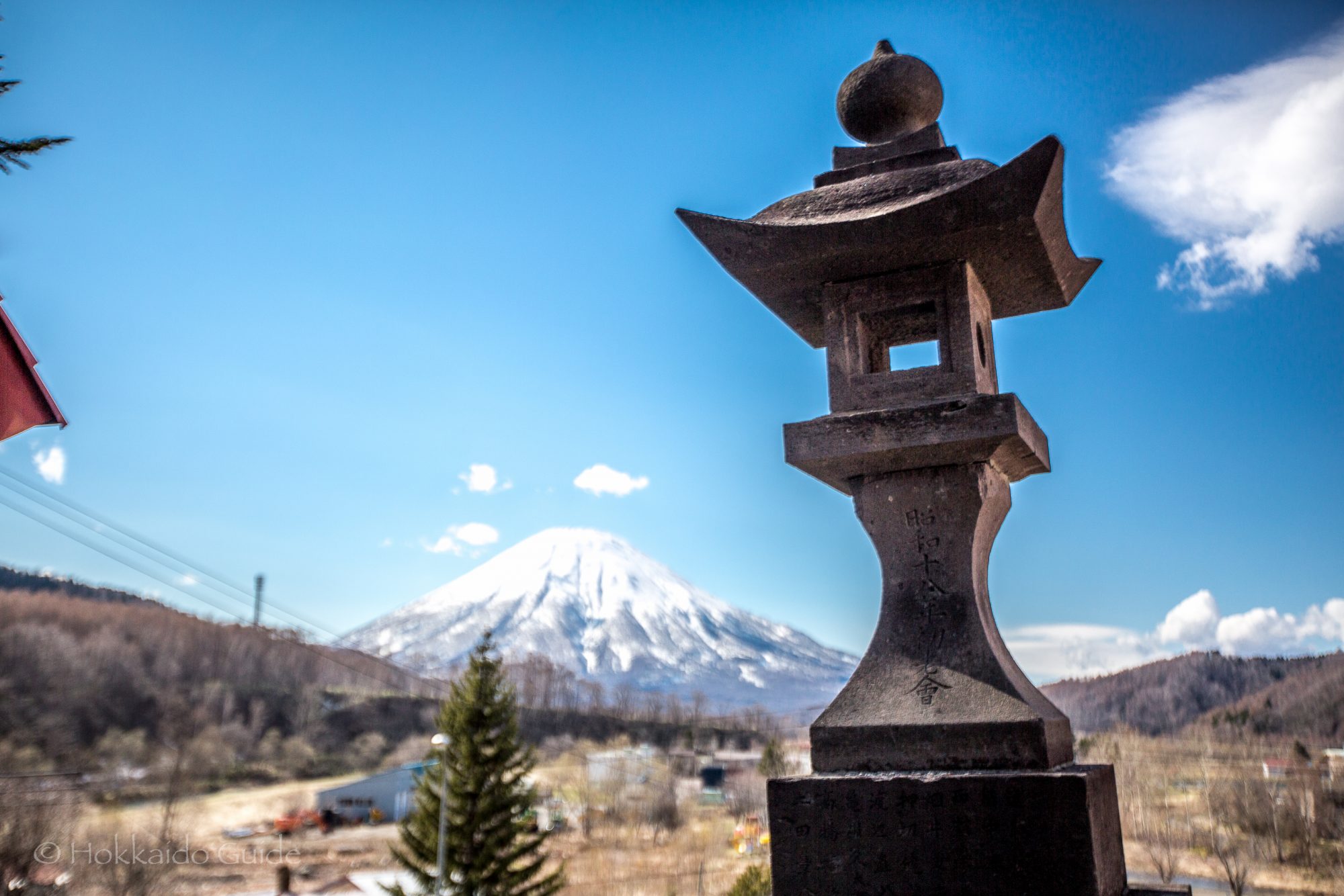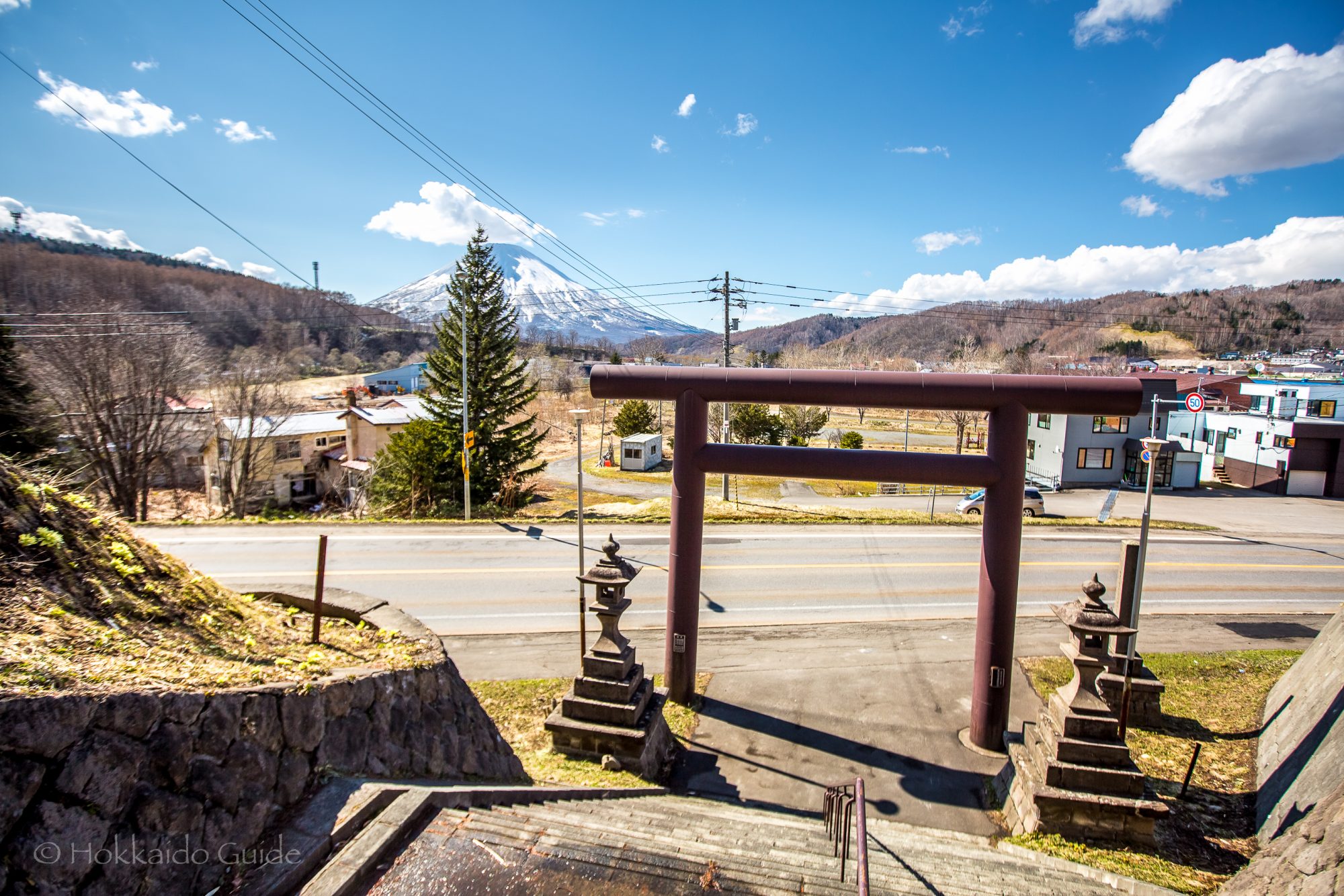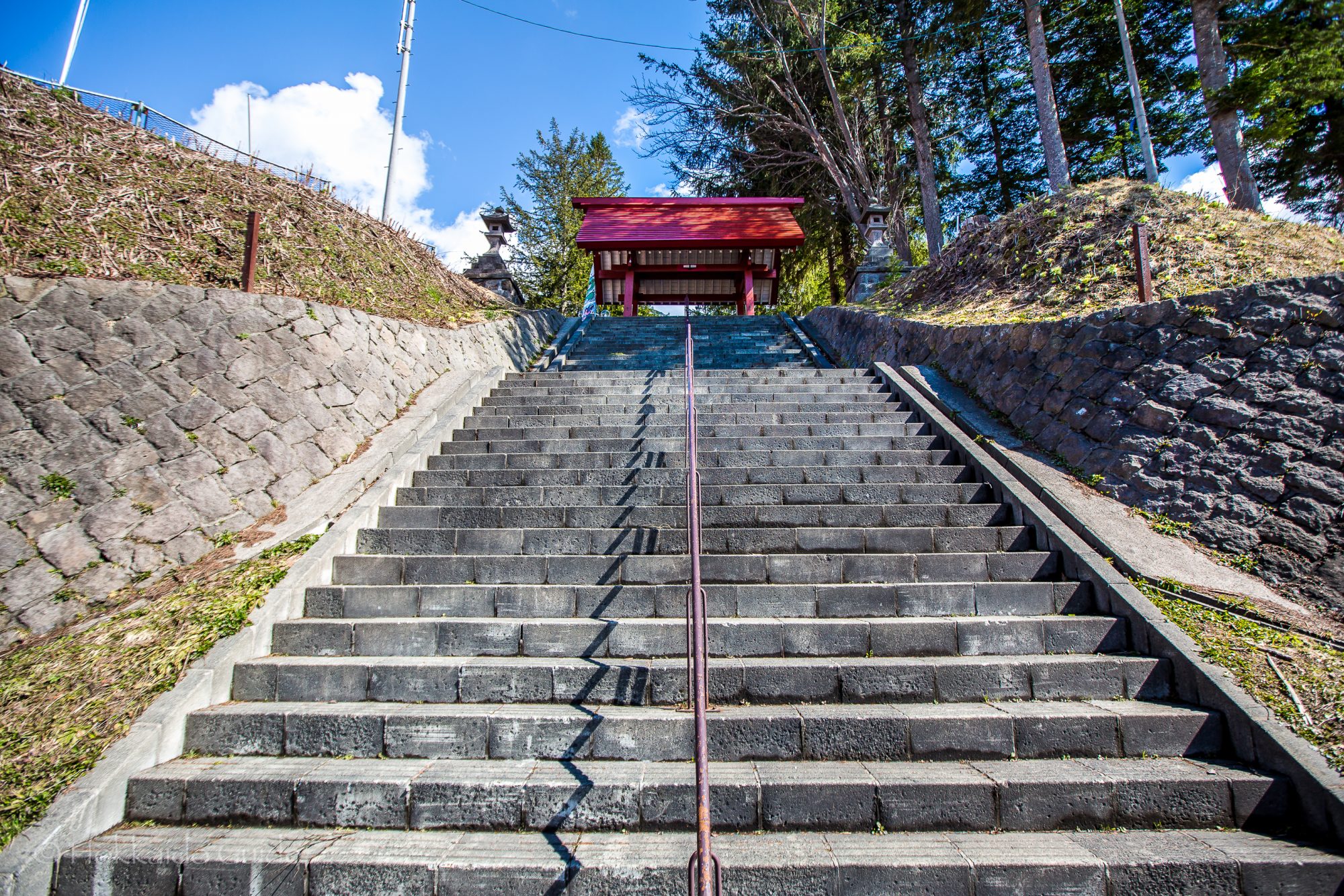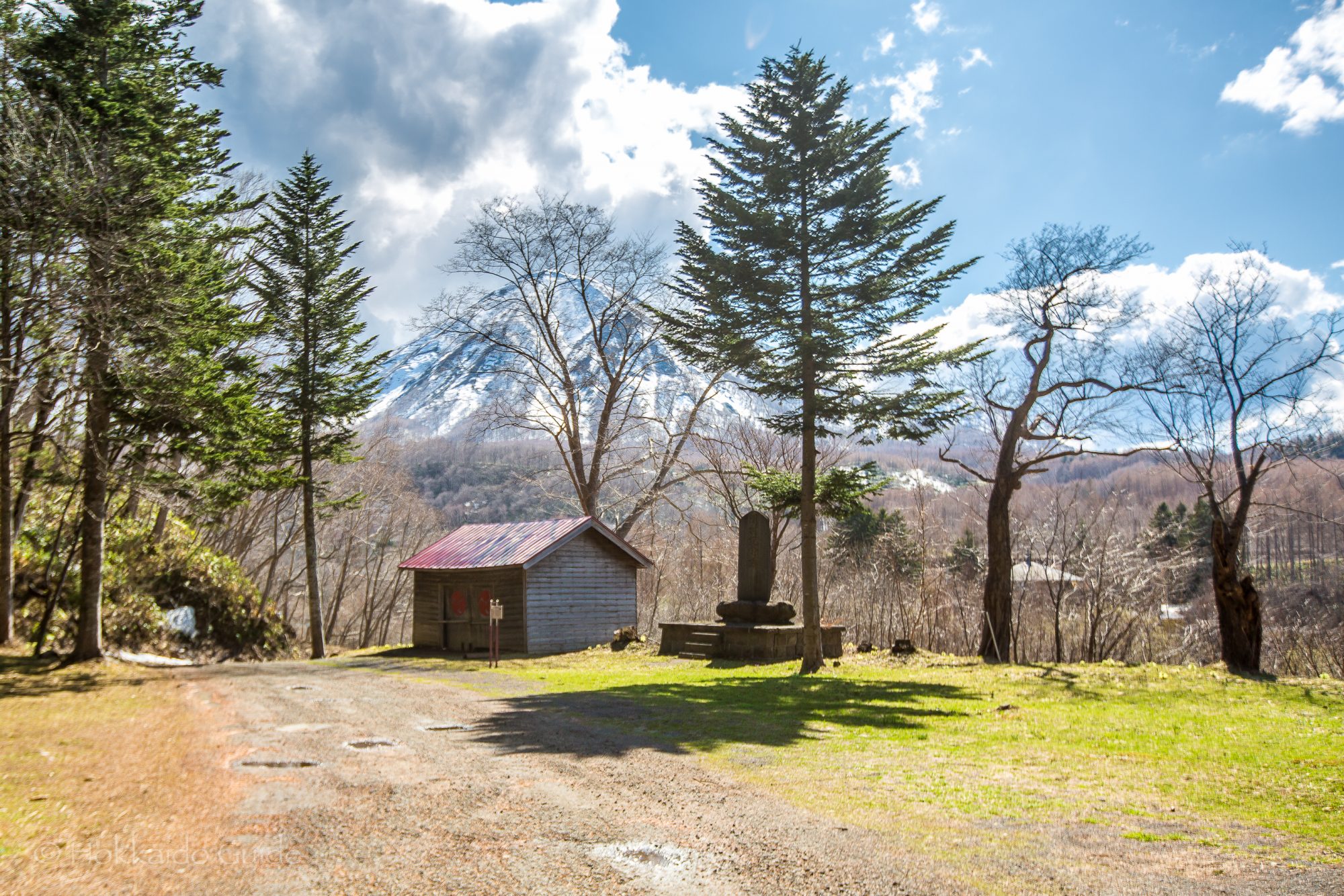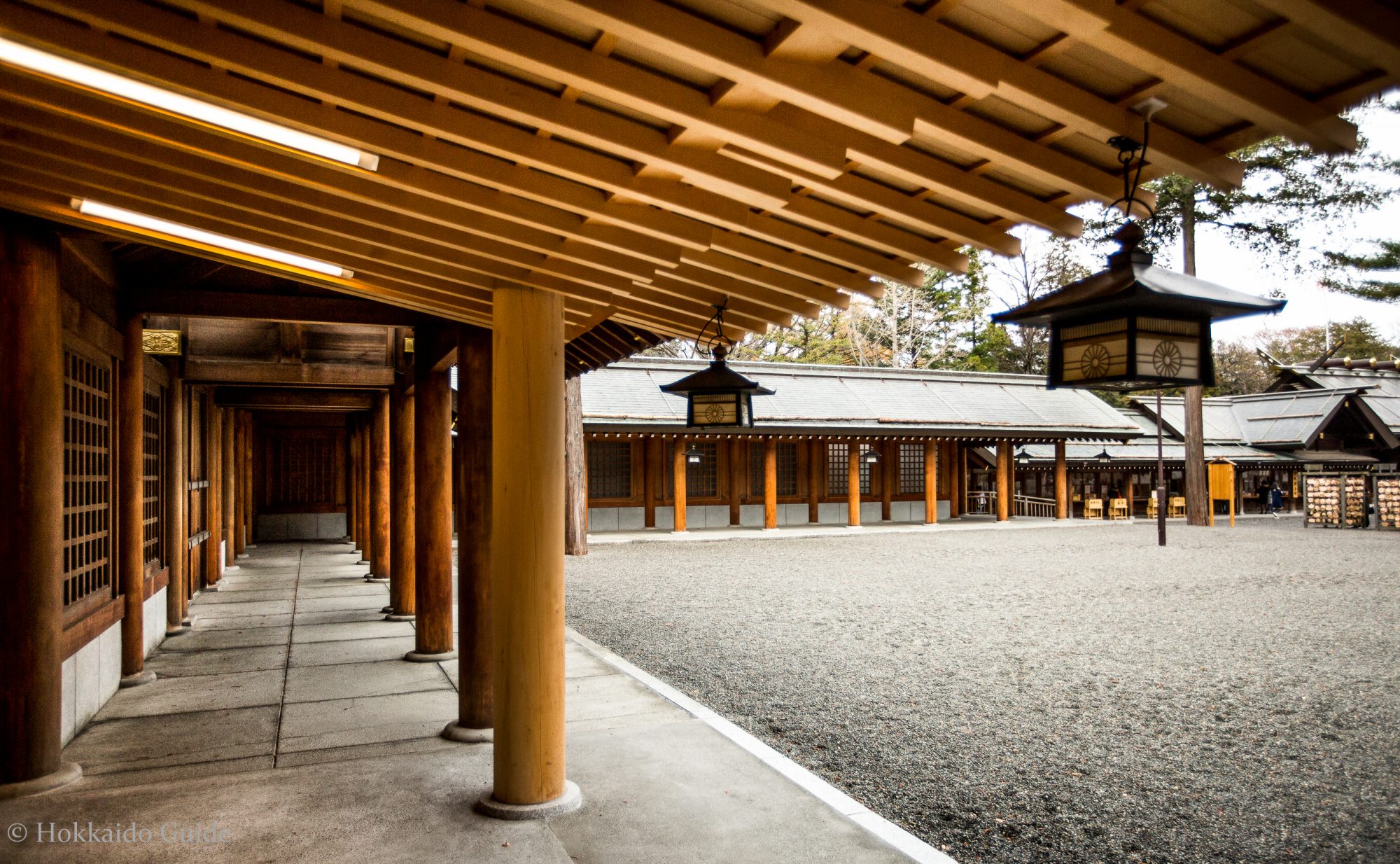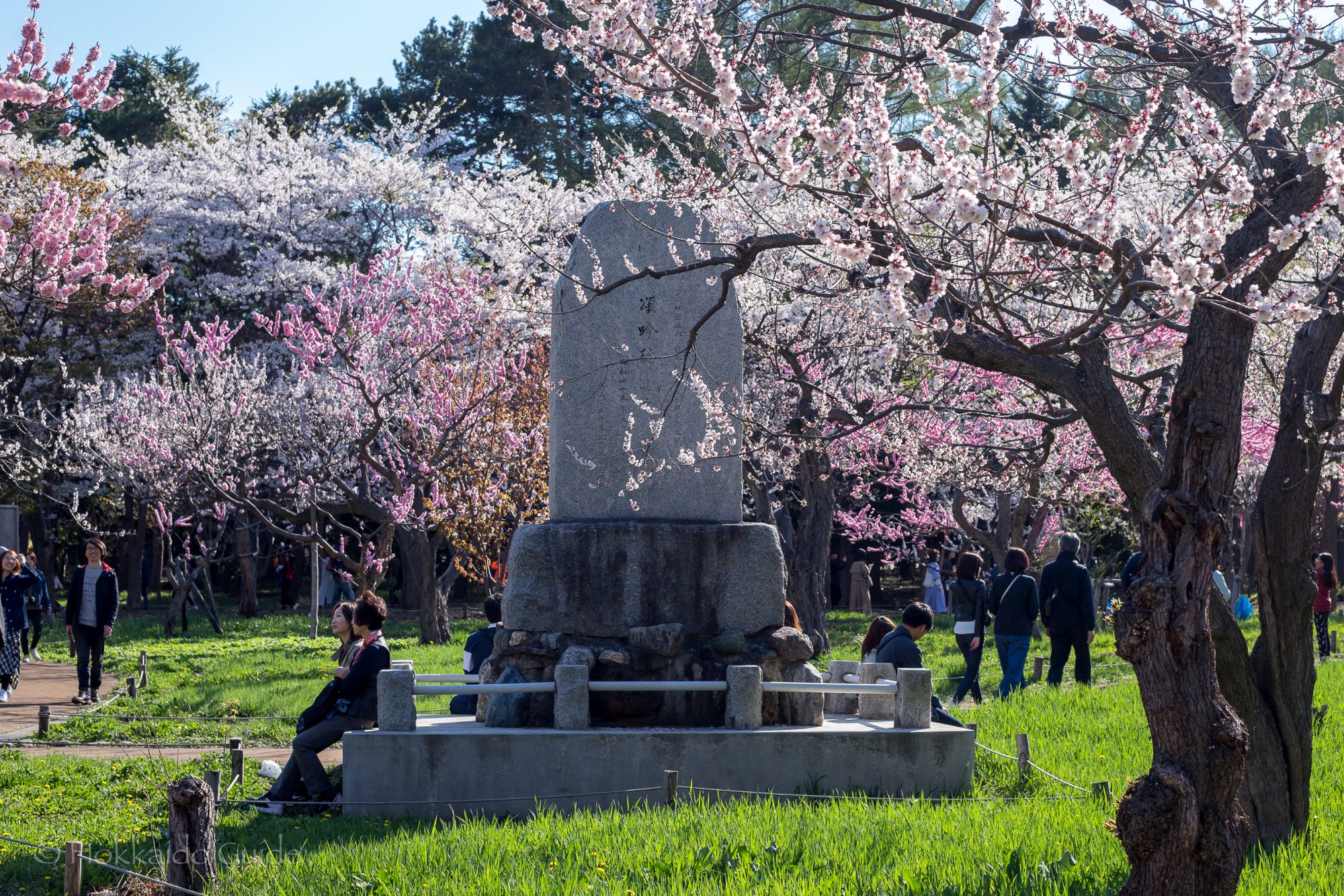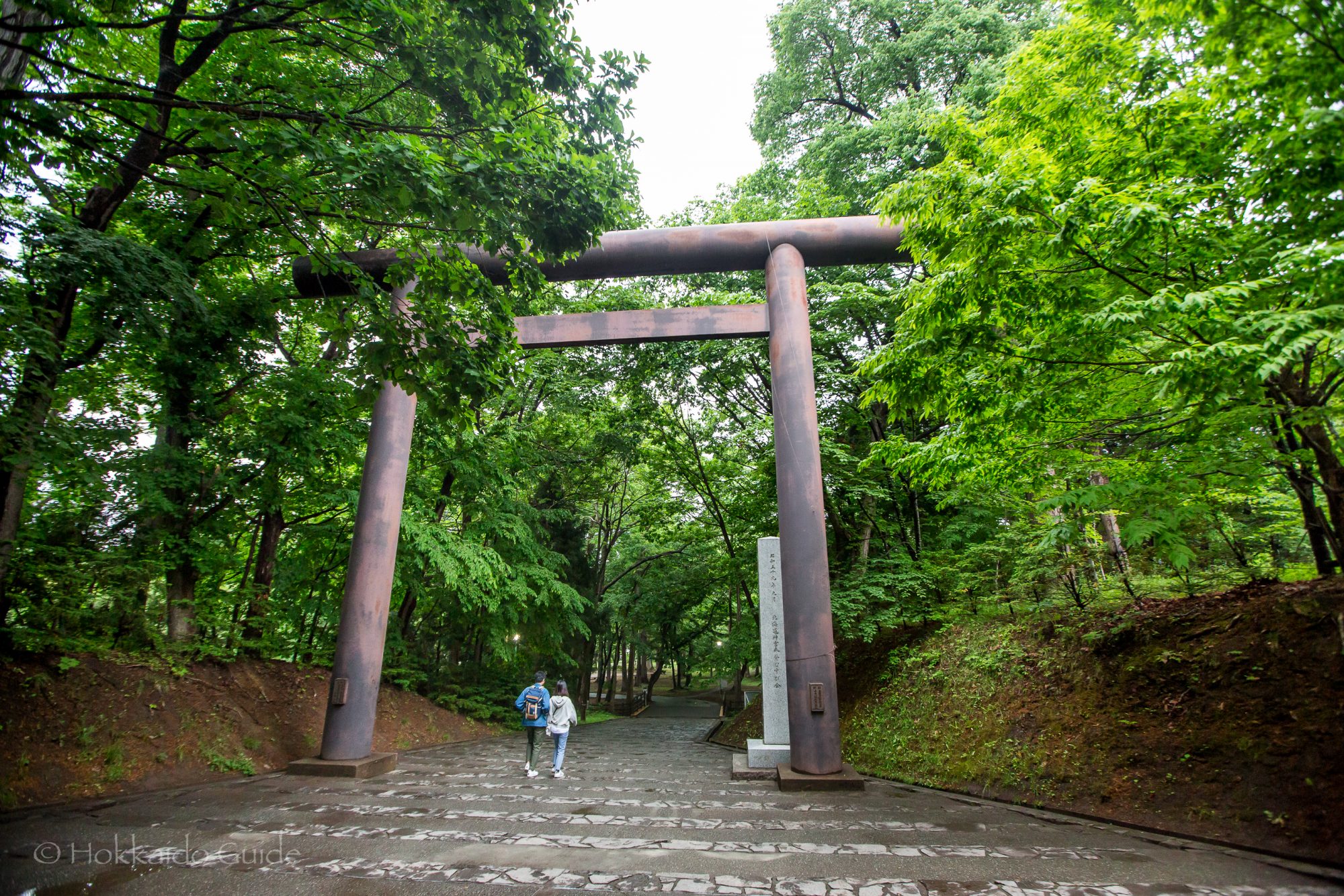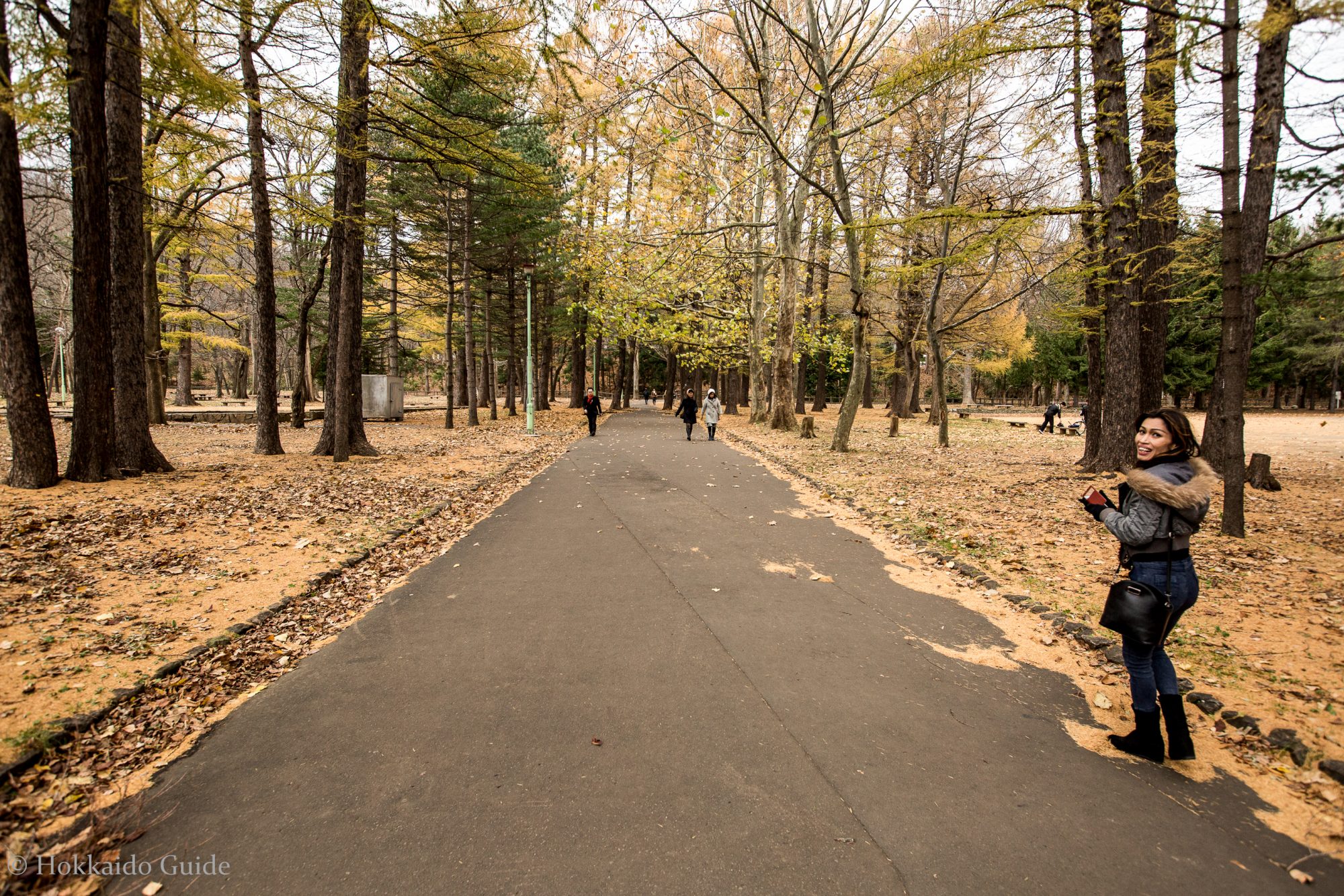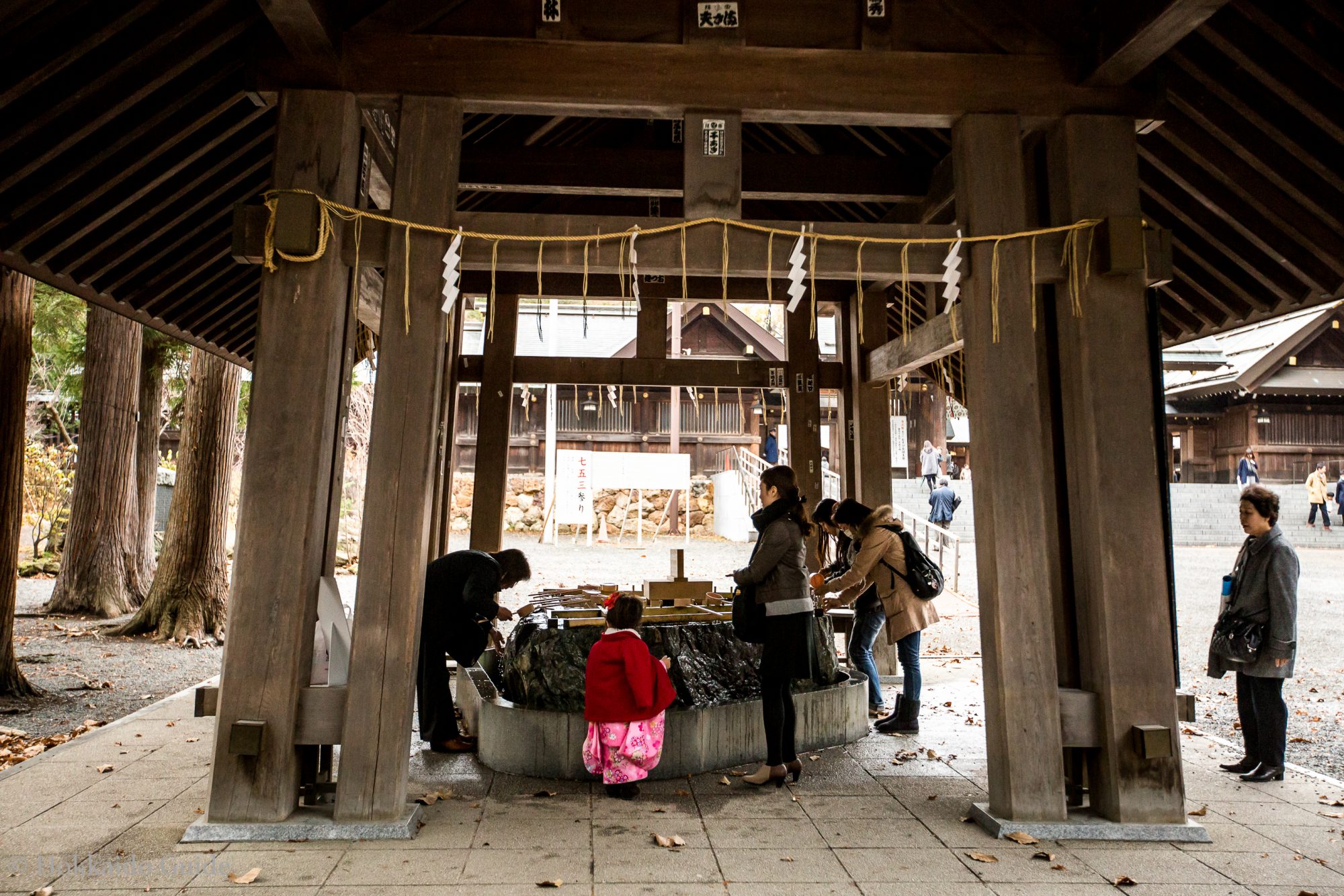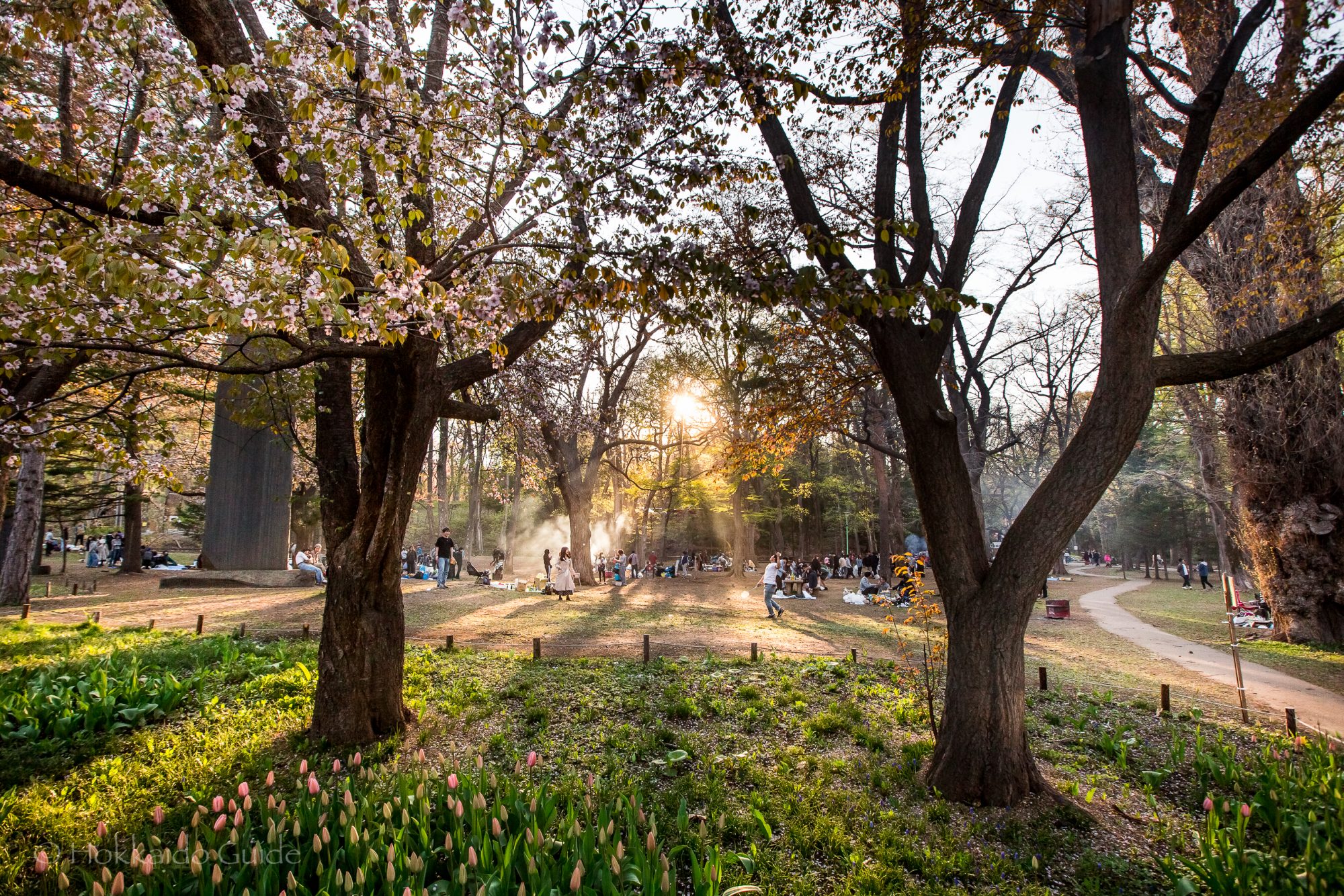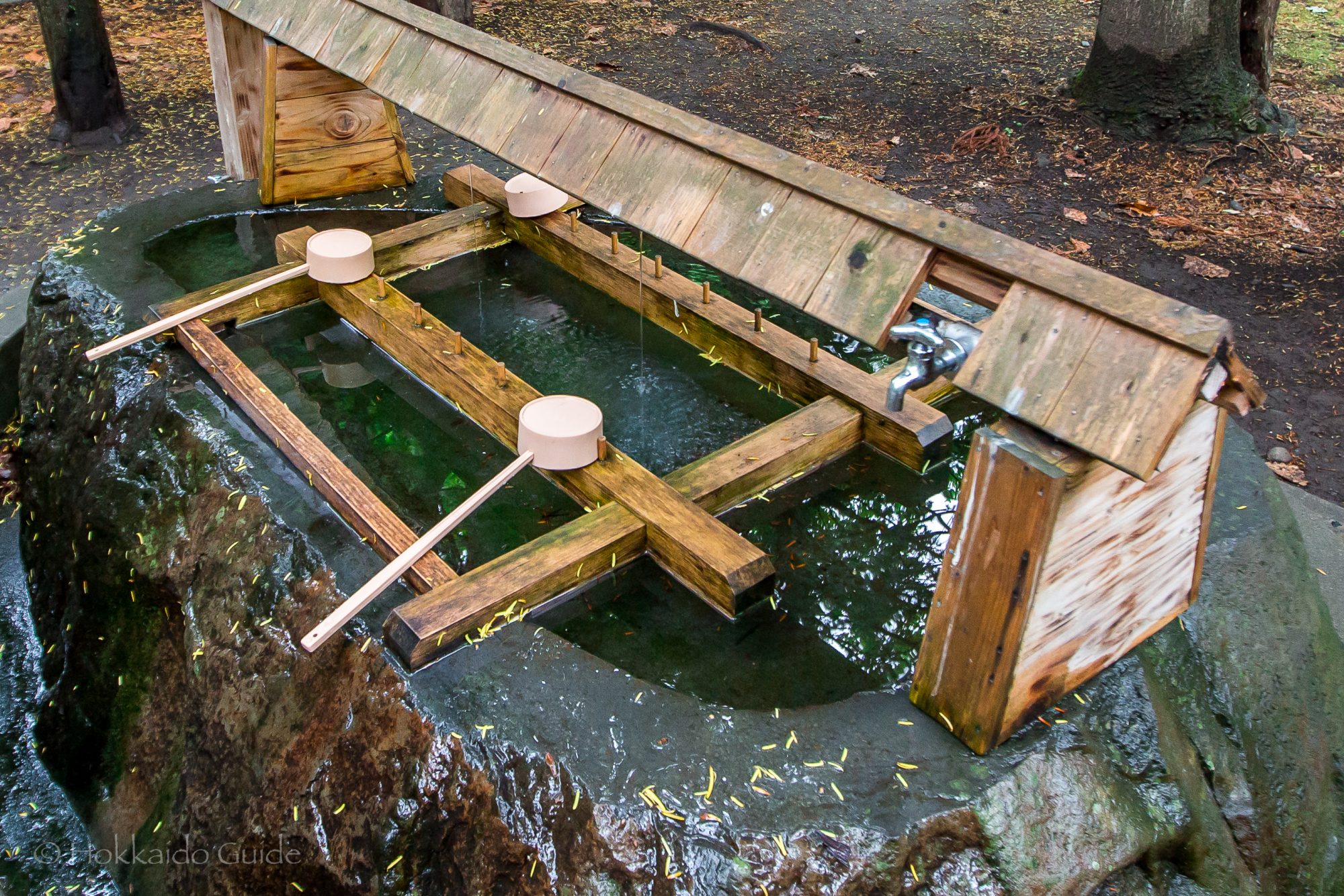
Tag: Shrine

Ōmori Park
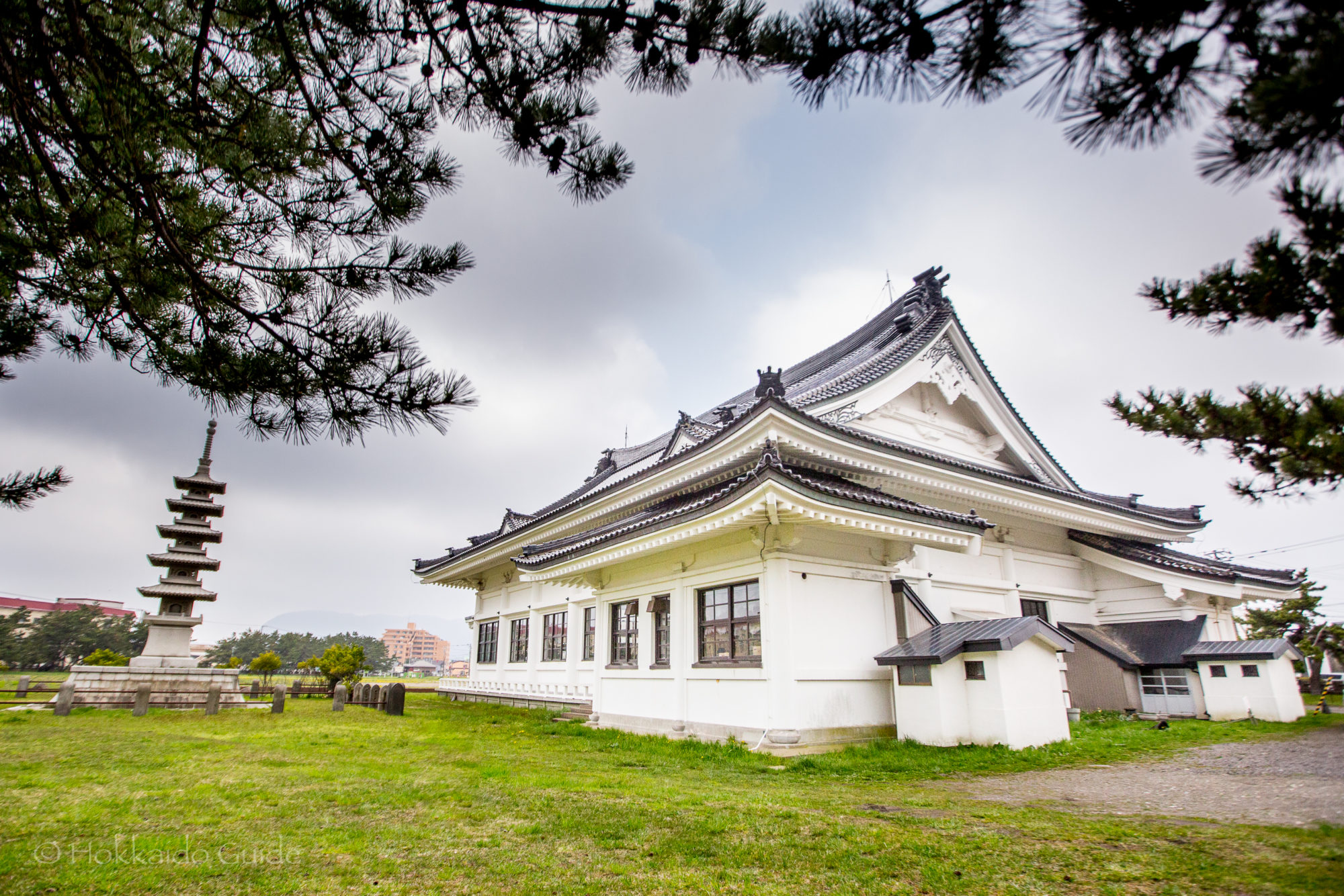
| Admission | Free |
| Opening Hours | Open 24 hours |
| Closed | - |
| Contact | 0138-40-3601 |
| Notes | Cemetery, sports park, playground, no parking, bathrooms |
| Location / Getting There | Located in Hakodate, by Omori beach. The closest tram station is Matsukaze-cho Station. It is a 7 minute walk east from this station. The park is also next to Kameda River. 33 Omoricho, Hakodate, Hokkaido 040-0034 |
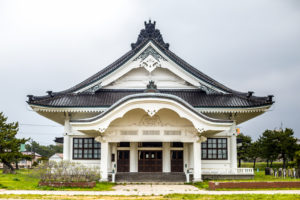 Ōmori Park is a large green space in Hakodate. It is used for sporting events (namely baseball), and as a play area for children. At the northern end of the park, you can find an impressive memorial hall and burial site. The park is popular for those looking to keep fit, as it has outdoor exercise equipment, plus it being a good spot to jog around. The spacious playground area also makes it a popular spot for families. The park is just across the road from Ōmori Beach as well, so there are a few things to see in the area.
Ōmori Park is a large green space in Hakodate. It is used for sporting events (namely baseball), and as a play area for children. At the northern end of the park, you can find an impressive memorial hall and burial site. The park is popular for those looking to keep fit, as it has outdoor exercise equipment, plus it being a good spot to jog around. The spacious playground area also makes it a popular spot for families. The park is just across the road from Ōmori Beach as well, so there are a few things to see in the area.
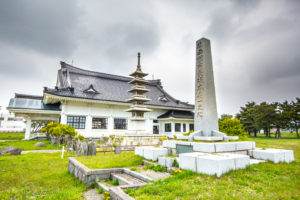 The memorial hall was constructed in 1937 with the five tier pagoda being built later. Takenosuke Miyamoto (a local businessman), was behind the construction of the pagoda using his own funds and property. The area has some historical significance and there is a large plaque (in Japanese), talking about the dark event that took place here many years ago. On the evening of March 21, 1954 a fire spread through the city and was fanned by strong winds from the ocean. The fire affected 102,000 with almost 3,000 reported missing. The Omori Bridge was terribly burned and many people were killed in and along the Kameda River. This river flows right by the memorial hall and pagoda.
The memorial hall was constructed in 1937 with the five tier pagoda being built later. Takenosuke Miyamoto (a local businessman), was behind the construction of the pagoda using his own funds and property. The area has some historical significance and there is a large plaque (in Japanese), talking about the dark event that took place here many years ago. On the evening of March 21, 1954 a fire spread through the city and was fanned by strong winds from the ocean. The fire affected 102,000 with almost 3,000 reported missing. The Omori Bridge was terribly burned and many people were killed in and along the Kameda River. This river flows right by the memorial hall and pagoda.
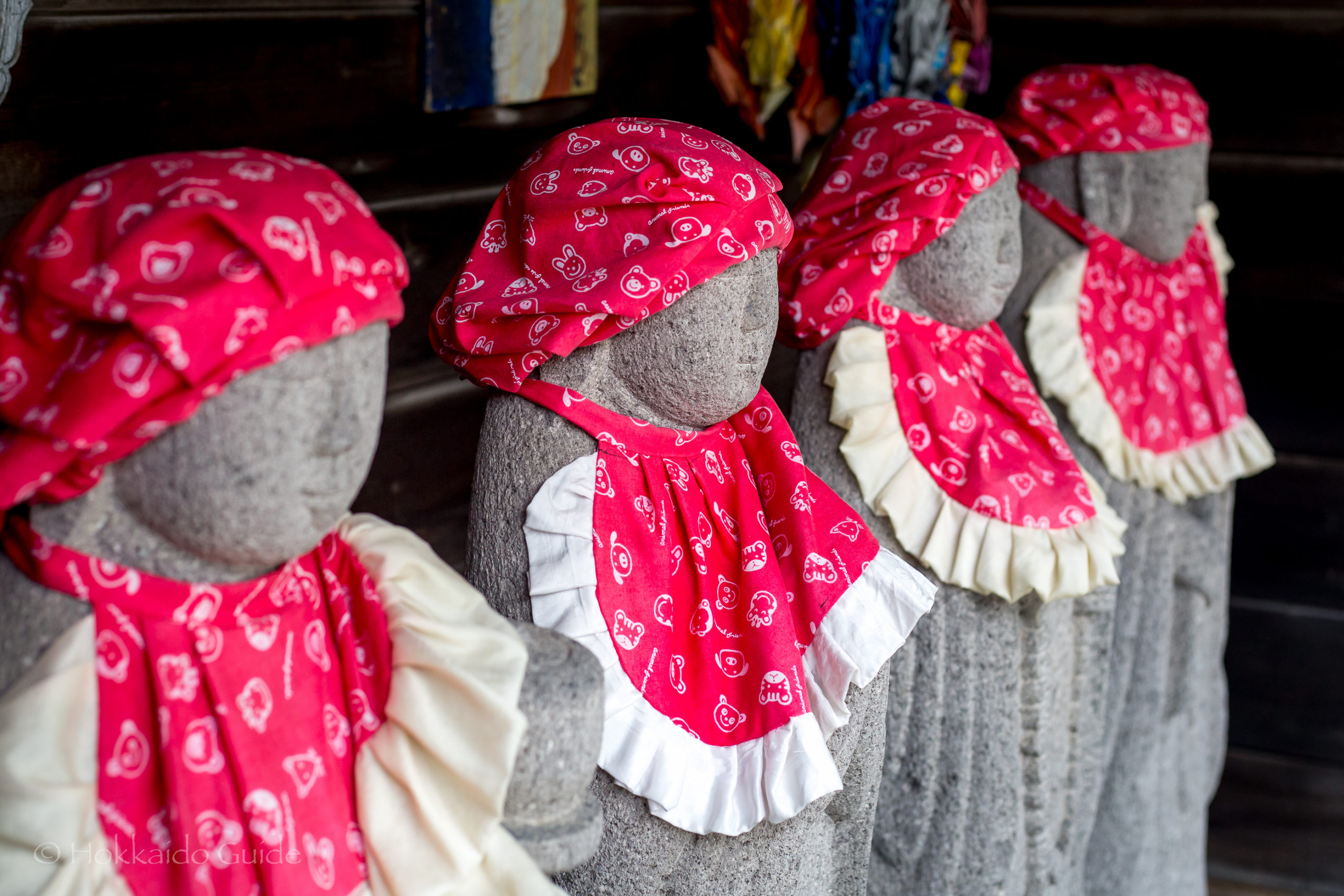
Daikanji
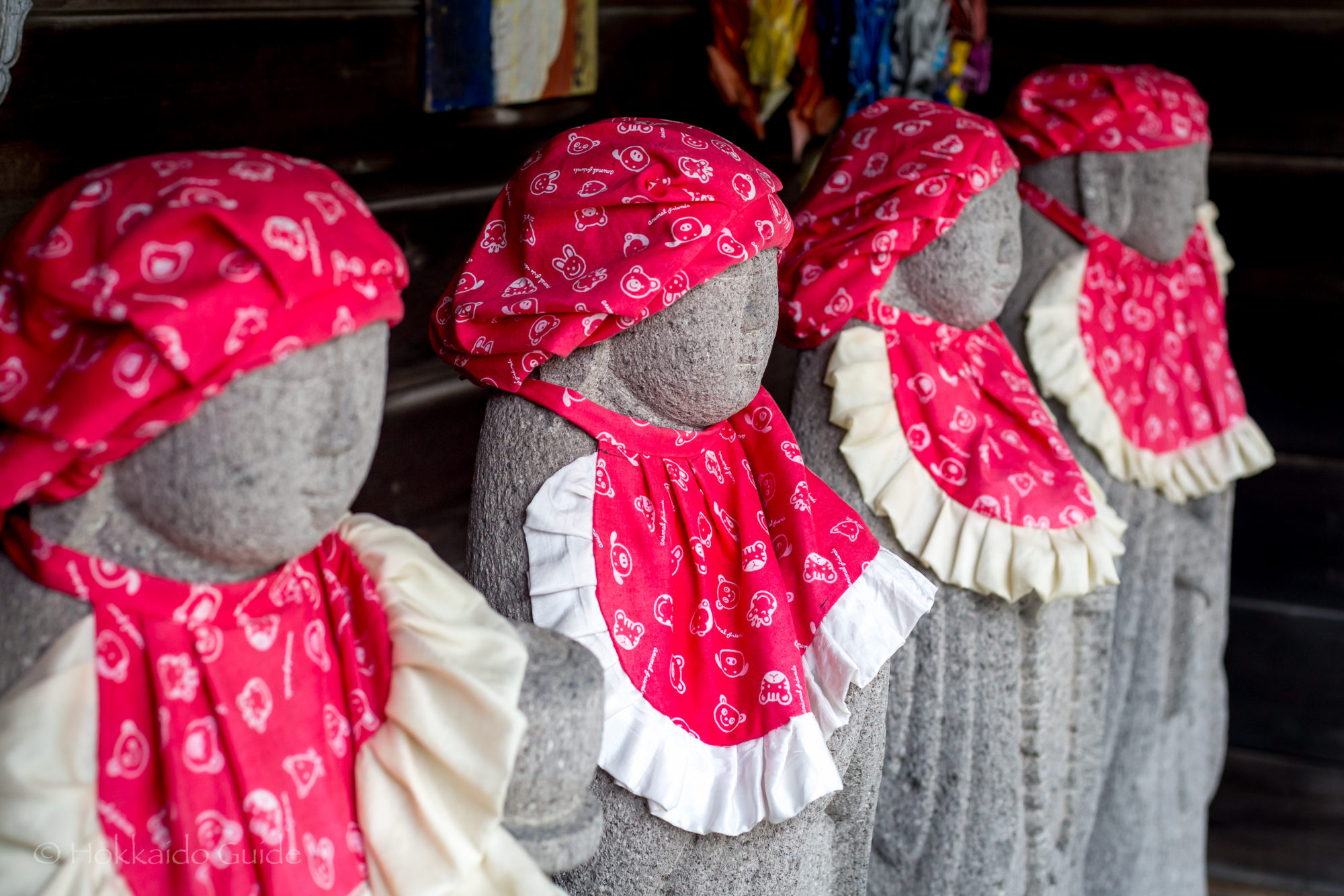
| Admission | Free |
| Contact | 011-3823-5067 |
| Notes | Buddhist temple, no parking |
| Location / Getting There | Located in central Hakodate. It is a 6 minute walk south east from from Matsukaze-cho tram station. It's also a 3 minute walk from Omori beach. 20-5 Omoricho, Hakodate, Hokkaido 040-0034 |
 Daikanji is one of the many Buddhist temples that can be found throughout Hokkaido, Japan. This unassuming temple is also the residence of the monks here. The temple is easy to miss as it is on a residential street, and has the appearance of a large house. Once through the main gate, there is a small courtyard off of the main entrance. The small Jizo Statues are here draped in red cloth. Japanese people believe that red is the color to defend against evil and this has not changed since ancient times.
Daikanji is one of the many Buddhist temples that can be found throughout Hokkaido, Japan. This unassuming temple is also the residence of the monks here. The temple is easy to miss as it is on a residential street, and has the appearance of a large house. Once through the main gate, there is a small courtyard off of the main entrance. The small Jizo Statues are here draped in red cloth. Japanese people believe that red is the color to defend against evil and this has not changed since ancient times.
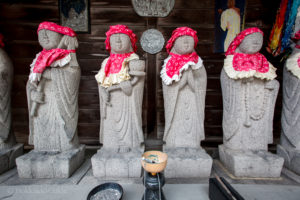 Due to babies also being vulnerable at a young age, parents dress them in red to keep them protected from danger and illness. This small temple is most easily accessed by car. There is no real parking here, though there is parking near the ocean which is only two blocks away, and not a far walk away. There are a couple of other temples in the area, so for those who have an interest in the Buddhist shrines, take a wander around plus enjoying the beachside.
Due to babies also being vulnerable at a young age, parents dress them in red to keep them protected from danger and illness. This small temple is most easily accessed by car. There is no real parking here, though there is parking near the ocean which is only two blocks away, and not a far walk away. There are a couple of other temples in the area, so for those who have an interest in the Buddhist shrines, take a wander around plus enjoying the beachside.
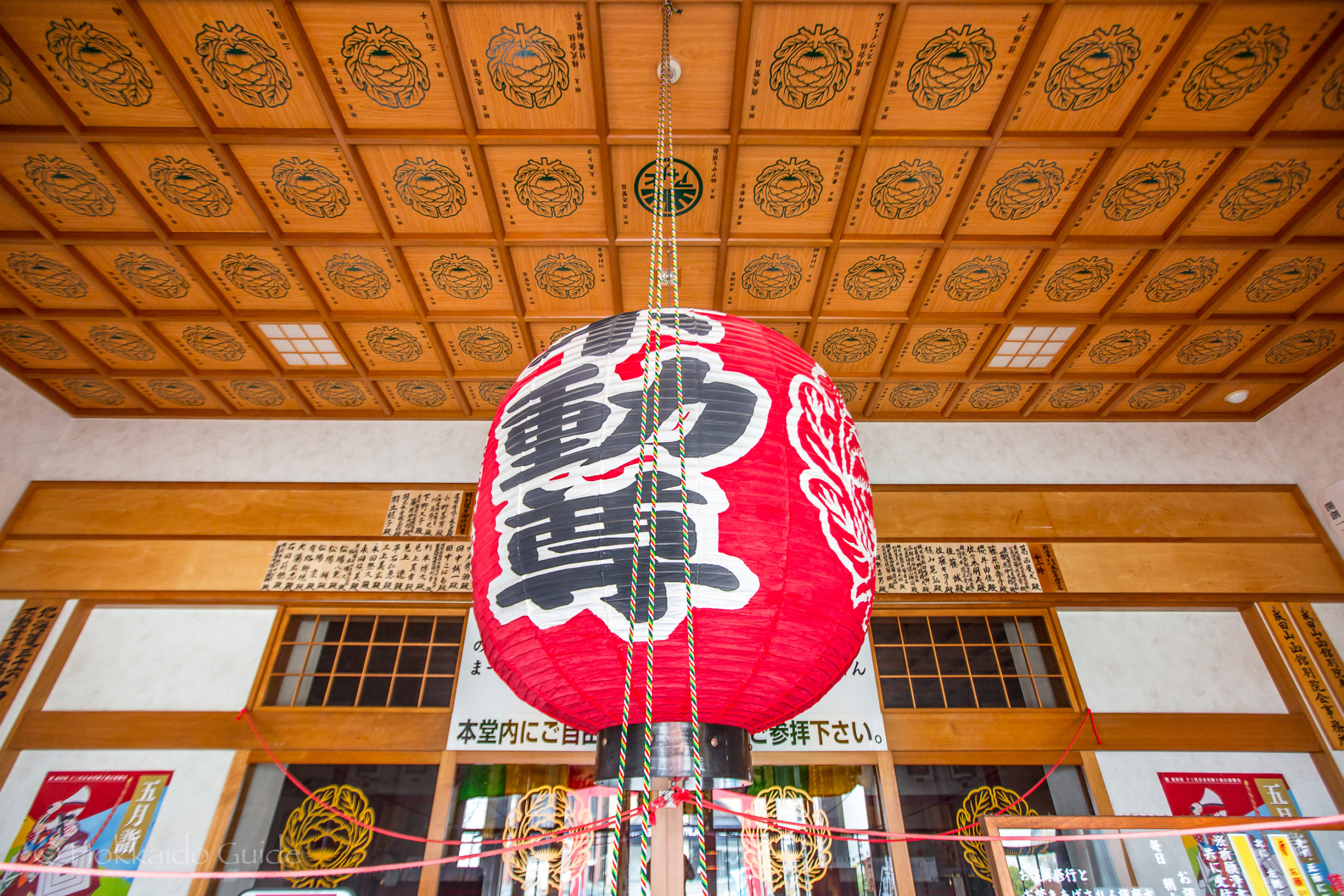
Kankanji
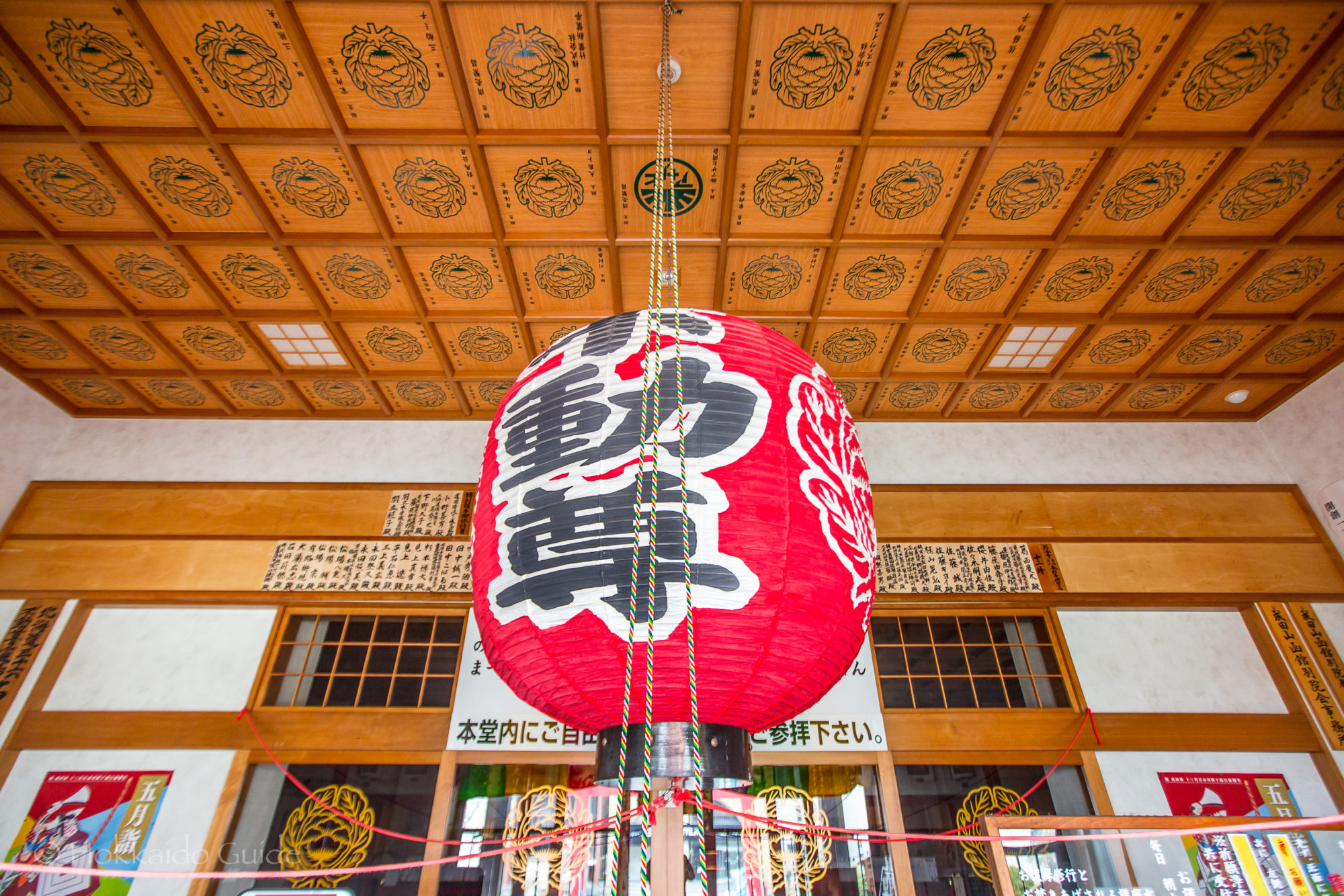
| Admission | Free |
| Opening Hours | - |
| Closed | - |
| Contact | 011-3822-0862 |
| Notes | Buddhist temple, no parking |
| Location / Getting There | Located at the central Hokkaido. It is a 2 minute walk from Matsukaze Cho street car station. It is directly across from Hakodate Promote Hotel. 15-17 Matsukazechō, Hakodate, Hokkaido 040-0035 |
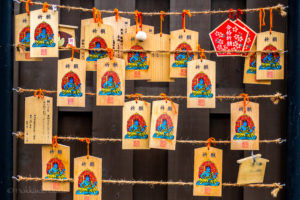 Kankanji is a large Buddhist temple in the central city of Hakodate. The temple is a short walk from many of the central hotels in the area and can be easily found off the main road. Throughout the year, (as with other temples of the same religious beliefs) special events and festivals are held. This temple is part of the Omotoyama Naritasan Shinshoji. There are eight other temples of the same sect and these can be found in Fukugawa (Tokyo), Kawagoe (Saitama), Sapporo (Hokkaido), Yokohama (Kanagawa), Osaka (Osaka), Nagoya (Aichi) and Fukui (Fukui prefecture).
Kankanji is a large Buddhist temple in the central city of Hakodate. The temple is a short walk from many of the central hotels in the area and can be easily found off the main road. Throughout the year, (as with other temples of the same religious beliefs) special events and festivals are held. This temple is part of the Omotoyama Naritasan Shinshoji. There are eight other temples of the same sect and these can be found in Fukugawa (Tokyo), Kawagoe (Saitama), Sapporo (Hokkaido), Yokohama (Kanagawa), Osaka (Osaka), Nagoya (Aichi) and Fukui (Fukui prefecture).
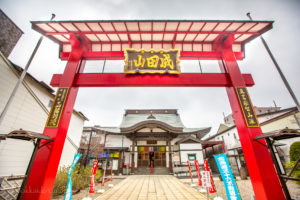 The Founding Memorial Festival is on the 27th and 28th of July every year. Besides this festival, there are numerous events throughout the year. The main events can be seen on January 1, February 3 brings the Setsubun festival, March 20 (Vernal Equinox Day) Spring equinox memorial service, April 8 is the Flower Festival, June 15 is the Aoba Festival, September 18 (Autumn equinox day) Autumn equinox memorial service. The longest event is from October 1 to November 30 and sees the Shichigosan special prayer meeting. Trinkets, amulets, and beads can be bought at this temple.
The Founding Memorial Festival is on the 27th and 28th of July every year. Besides this festival, there are numerous events throughout the year. The main events can be seen on January 1, February 3 brings the Setsubun festival, March 20 (Vernal Equinox Day) Spring equinox memorial service, April 8 is the Flower Festival, June 15 is the Aoba Festival, September 18 (Autumn equinox day) Autumn equinox memorial service. The longest event is from October 1 to November 30 and sees the Shichigosan special prayer meeting. Trinkets, amulets, and beads can be bought at this temple.

Saijioji
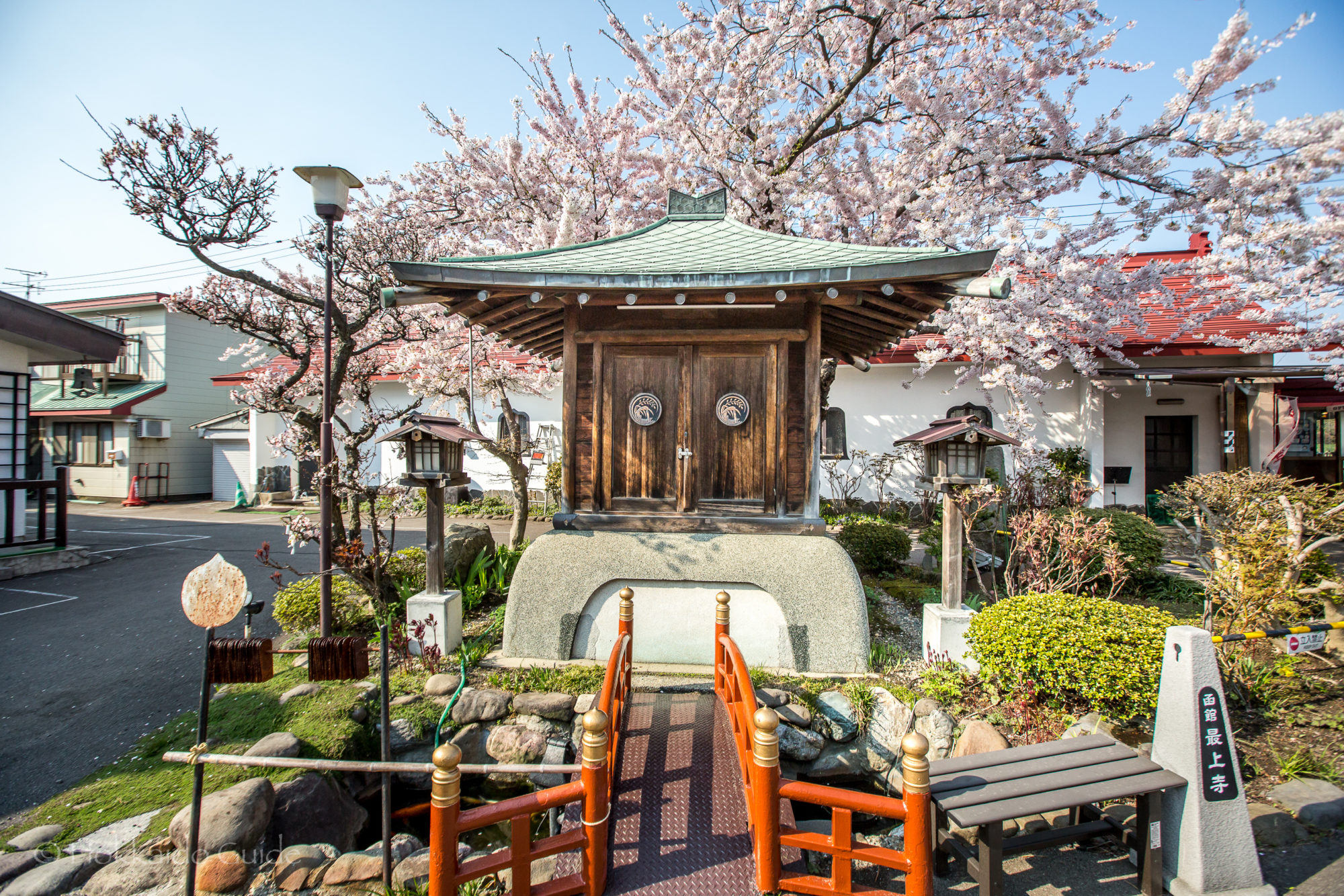
| Admission | Free |
| Opening Hours | 8:00 - 18:00 |
| Closed | - |
| Contact | 011-3856-0572 http://www2.saijoji/homepage |
| Notes | Buddhist shrine, sightseeing spot, no parking (though can park across the street) |
| Location / Getting There | Located in central Hakodate. It's across from Goryokaku Park on the west side. From Suginami-cho station it is a 13 minute walk north. 29-15 Goryokakucho, Hakodate, Hokkaido 040-0001 |
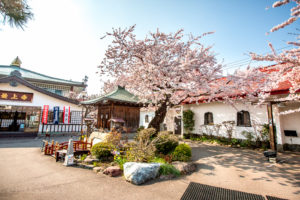 Saijioji is a small Buddhist Temple in central Hakodate. It is directly across from Goryokaku Park, and is particularly beautiful in the spring as there are a couple of cherry blossoms in the courtyard area. There is also a small cafe next door making this a nice area to walk around. Being a Buddhist temple, you can find the various statues and motifs symbolizing the faith of this religion. There is a lovely little central shrine in the courtyard. It makes for a great photo opportunity.
Saijioji is a small Buddhist Temple in central Hakodate. It is directly across from Goryokaku Park, and is particularly beautiful in the spring as there are a couple of cherry blossoms in the courtyard area. There is also a small cafe next door making this a nice area to walk around. Being a Buddhist temple, you can find the various statues and motifs symbolizing the faith of this religion. There is a lovely little central shrine in the courtyard. It makes for a great photo opportunity.
 Inside the temple itself they have the statues of the four widely revered Bodhisattva (Bosatsu in Japanese). Bodhisattva refers to anyone who has made a resolution to become a Buddha and has also received a confirmation or prediction from a living Buddha that this will be so. The four Bodhisattva include boundless compassion, wisdom, practice, and lastly patience and salvation from suffering. This is a nice spot to drop into and visit on your way to or from the Goryokaku Park nearby. And why not take a break at the cafe next door.
Inside the temple itself they have the statues of the four widely revered Bodhisattva (Bosatsu in Japanese). Bodhisattva refers to anyone who has made a resolution to become a Buddha and has also received a confirmation or prediction from a living Buddha that this will be so. The four Bodhisattva include boundless compassion, wisdom, practice, and lastly patience and salvation from suffering. This is a nice spot to drop into and visit on your way to or from the Goryokaku Park nearby. And why not take a break at the cafe next door.
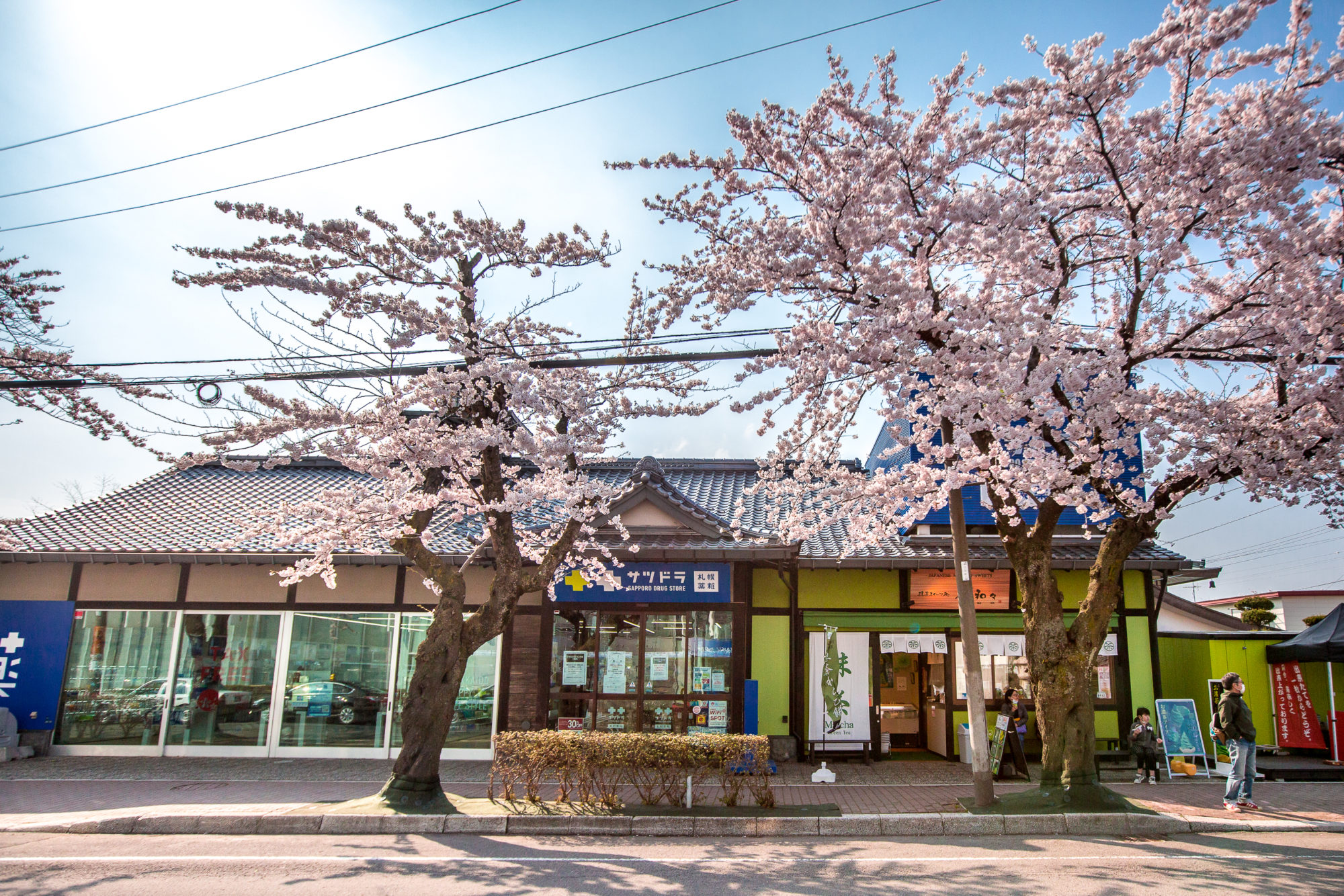
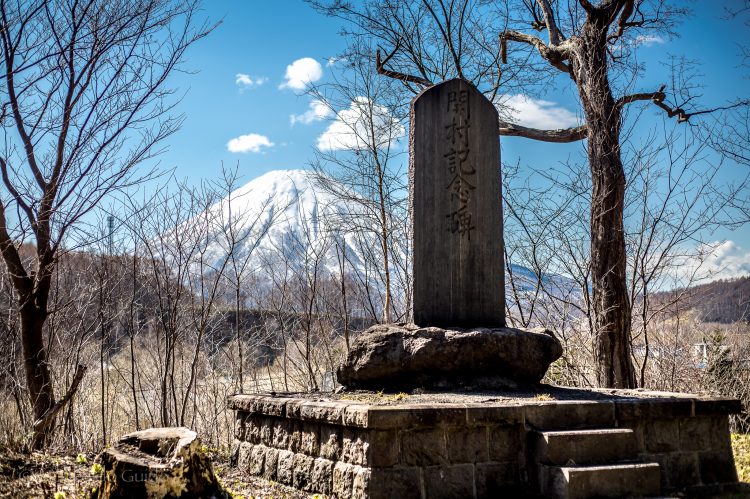
Kimobetsu Shrine

| Admission | Free |
| Opening Hours | - |
| Closed | - |
| Contact | 011-3633-2246 |
| Notes | Shinto shrine, sightseeing spot, no parking (though can park across the street), photography spot |
| Location / Getting There | Located at the southern end of the town of Kimobetsu. The temple is just past Kimobetsu River on the left (coming from Sapporo), and just past Aspeila Shopping Market. 323 Kimobetsu, Abuta District, Hokkaido 044-0201 |
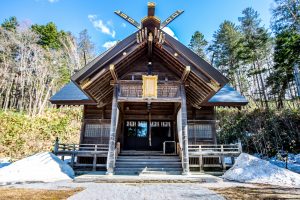 In 1891, there was a drought in the late spring. On July 3rd Ōtsuki Mamoru and Hitoshi Otokichi travelled to Mt. Shiribetsu and attended a fasting prayer rain ritual for three days. On the evening of the 5th of July it started to rain. The plants and trees revived and the landscape flourished again. To give thanks, a small shrine was constructed as a thank you. This shrine was at the present location. In February 1945, the current shrine was established. In August 1952 the shrine burned down but was reconstructed. In September 2000, renovations were done to the large roof and work was done on the main gold foil metal fittings.
In 1891, there was a drought in the late spring. On July 3rd Ōtsuki Mamoru and Hitoshi Otokichi travelled to Mt. Shiribetsu and attended a fasting prayer rain ritual for three days. On the evening of the 5th of July it started to rain. The plants and trees revived and the landscape flourished again. To give thanks, a small shrine was constructed as a thank you. This shrine was at the present location. In February 1945, the current shrine was established. In August 1952 the shrine burned down but was reconstructed. In September 2000, renovations were done to the large roof and work was done on the main gold foil metal fittings.
 The land area of Kimobetsu Shrine is large with the shrine itself sitting at the top. What makes this shrine such a great place to visit is its views of Mt. Yotei and especially Mt. Shiribetsu (the mountain that was the scene of the fasting prayer over a hundred years ago). Mt. Shiribetsu is right across from the shrine and is definitely impressive. Kimobetsu Shrine is great to visit during late autumn. At this time the trees are changing colors and there is snow on the mountains. Alternatively, April is also a good month to visit after the snow has melted and the trees are blooming again. The shrine and surrounding buildings is a pleasant spot to walk around in the peace and quiet of the countryside. Don’t forget to bring your camera!
The land area of Kimobetsu Shrine is large with the shrine itself sitting at the top. What makes this shrine such a great place to visit is its views of Mt. Yotei and especially Mt. Shiribetsu (the mountain that was the scene of the fasting prayer over a hundred years ago). Mt. Shiribetsu is right across from the shrine and is definitely impressive. Kimobetsu Shrine is great to visit during late autumn. At this time the trees are changing colors and there is snow on the mountains. Alternatively, April is also a good month to visit after the snow has melted and the trees are blooming again. The shrine and surrounding buildings is a pleasant spot to walk around in the peace and quiet of the countryside. Don’t forget to bring your camera!

Hokkaido Shrine
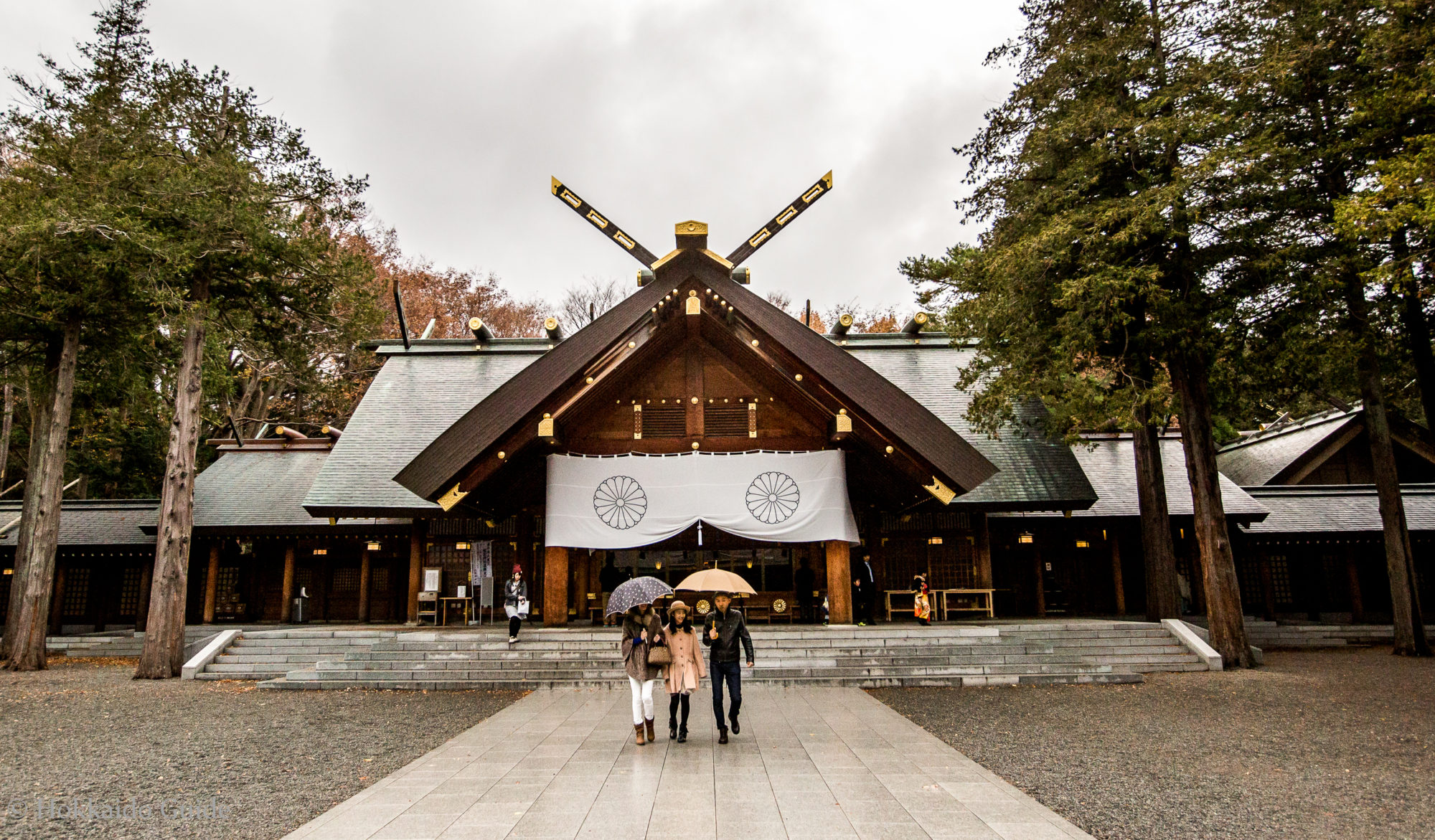
| Admission | Free |
| Opening Hours | - |
| Closed | - |
| Contact | 011-611-0261 http://www.hokkaidojingu.or.jp/ |
| Notes | Sightseeing spot, wedding venue |
| Location / Getting There | The shrine is located at the top of Maruyama Park. It is a 8 minute walk from Maruyama Subway station. 474 Miyagaoka, Chuo Ward, Sapporo, Hokkaido 064-0959 |
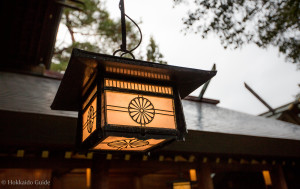 Hokkaido Shrine was constructed in 1871 to hold the deities, Ōkunitama, Okuninushi, and Sukunahikona, and also the soul of the Meiji Emporer. It is the main Shrine of Hokkaido and a popular spot for tourists and locals alike. It is located in Maruyama Park (Maruyama Koen) on the West side of Sapporo. The shrine is well worth a look in all seasons, especially Spring. It is surrounded by 1,500 cherry blossom trees which usually bloom early to mid May. During this time thousands of locals have their Hanami (flower viewing parties) and the temple is a great backdrop.
Hokkaido Shrine was constructed in 1871 to hold the deities, Ōkunitama, Okuninushi, and Sukunahikona, and also the soul of the Meiji Emporer. It is the main Shrine of Hokkaido and a popular spot for tourists and locals alike. It is located in Maruyama Park (Maruyama Koen) on the West side of Sapporo. The shrine is well worth a look in all seasons, especially Spring. It is surrounded by 1,500 cherry blossom trees which usually bloom early to mid May. During this time thousands of locals have their Hanami (flower viewing parties) and the temple is a great backdrop.
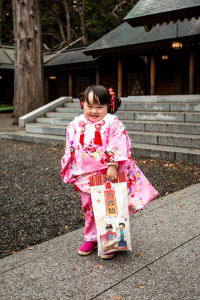 In early Summer the Sapporo Festival is held which sees portable shrines carried around the city and stalls set up near the Shrine. New Year’s Eve and New Year’s Day is also a popular time where families will go to pray.At the shrine you are free to walk around in the courtyard where you can take photos, purchase fortune tokens, and see the occasional traditional Japanese wedding. Don’t be surprised to see a monk blessing a car out the front either as some new car owners pay for this ceremony. The shrine is located in Maruyama Park (Maruyama Koen) which is located on the west side of Sapporo. The main way to get there is to take the subway from Odori Subway Station and take the Tozai Line (Orange line) to Maruyama Koen which is 3 stops away. After exiting it’s a 15 minute walk west through Maruyama Park. Keep heading up the path which is lined with huge Elm and Cider trees. Along the way you will see various smaller shrines.
In early Summer the Sapporo Festival is held which sees portable shrines carried around the city and stalls set up near the Shrine. New Year’s Eve and New Year’s Day is also a popular time where families will go to pray.At the shrine you are free to walk around in the courtyard where you can take photos, purchase fortune tokens, and see the occasional traditional Japanese wedding. Don’t be surprised to see a monk blessing a car out the front either as some new car owners pay for this ceremony. The shrine is located in Maruyama Park (Maruyama Koen) which is located on the west side of Sapporo. The main way to get there is to take the subway from Odori Subway Station and take the Tozai Line (Orange line) to Maruyama Koen which is 3 stops away. After exiting it’s a 15 minute walk west through Maruyama Park. Keep heading up the path which is lined with huge Elm and Cider trees. Along the way you will see various smaller shrines.

